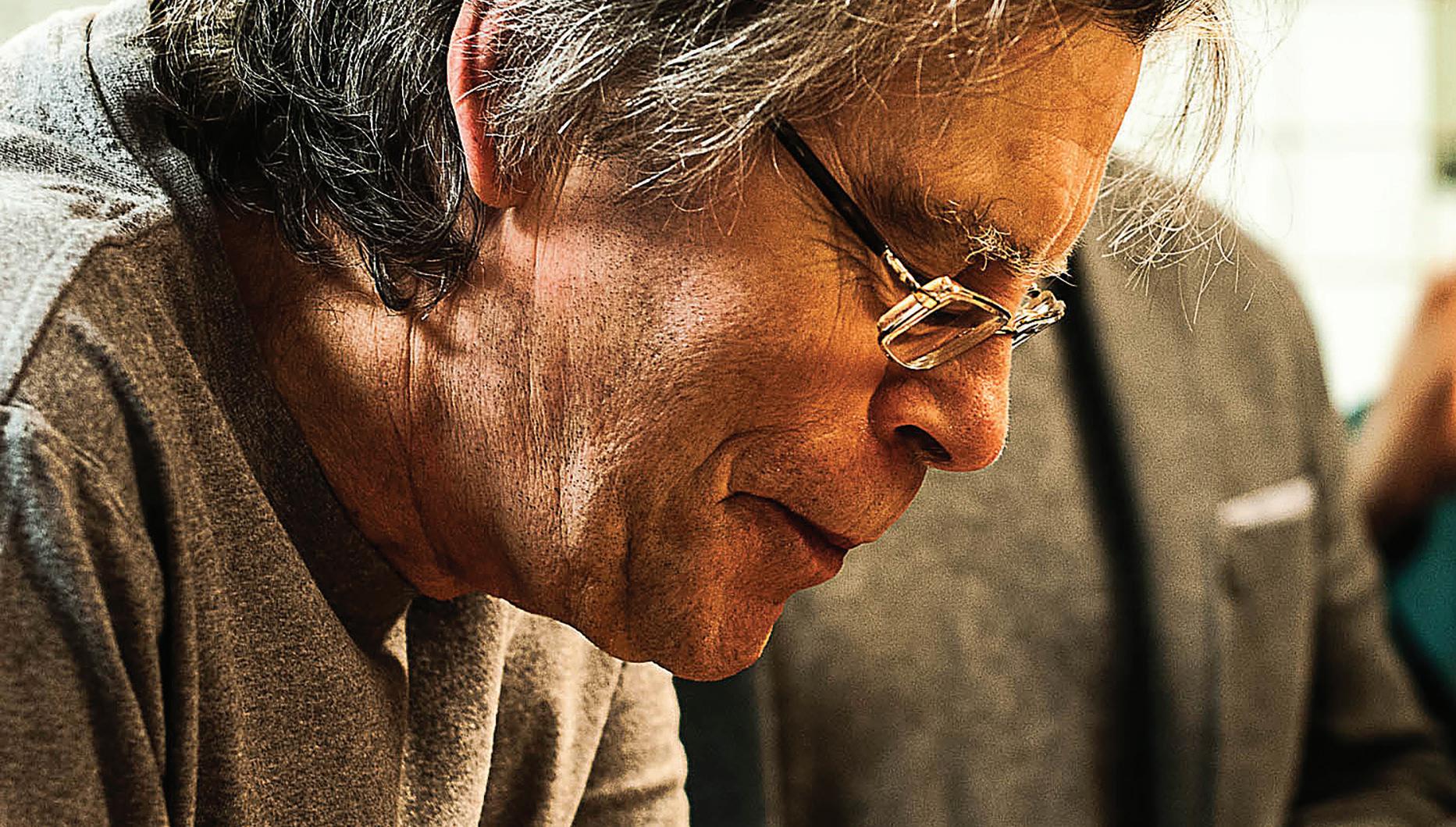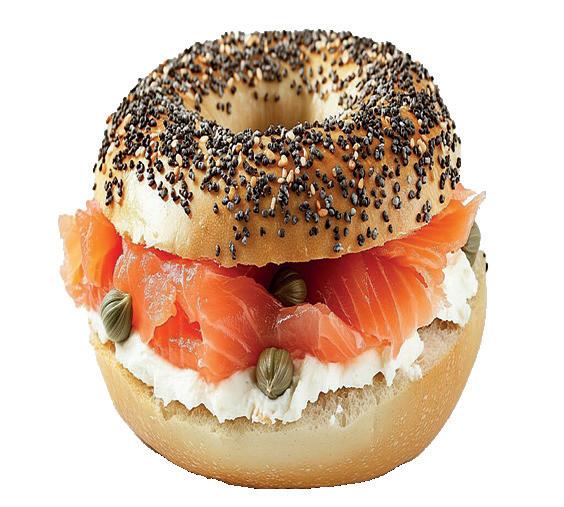



‘Time for a union





‘Time for a union

IN the past few weeks, a new Instagram account has popped up, announcing itself as the new Student Union for the University of Exeter. To those who have not come across this account yet, this all might be a little confusing. Is the Guild not the UOE’s version of a student union? And if not, who is this new student union that seems to have stepped into the spotlight?
On this Instagram account (yourstudentunion_uoe), Your Student Union have posted an introductory statement, explaining who they are. We also spoke directly to Your Student Union, to get a better understanding of why they’ve formed and what their goals are moving forward into the academic year.
All students should be familiar with the student Guild, who are, by definition, supposed to act as repre-
sentatives for the student body. The Guild’s function is to act as a student union; Exeposé has previously reported that that use of the word ‘Guild’ instead of union is due to its roots in craft groups who would join together for the purposes of protection from government regulation. However, Your Student Union have criticised this, saying on their Instagram that “The Guild insists they are our student union, but isn’t brave enough to even bear the name”. The Guild is currently run by a board of trustees, many of whom are voted in by the student body at the end of each academic year.
Your Student Union have stated that it was ‘time for a union for students, by students’. We asked Your Student Union why they think their group was important and what the Guild is not currently achieving. They replied: “The Guild is sorely failing in its role as a democratic mechanism to lobby the university on behalf of its students. A ‘union’ is an activist organisation first and foremost, but the
Guild has lost this powerful identity. We’re not trying to replace the whole institution of the Guild, but are filling the void left by their inability to effectively campaign for social justice”.
Recently the group held an alternative fresher’s fair, with the Intersectional Coalition of Societies. Throughout this fair they spoke about how this movement was built from the way the Guild handled the Islamophobic comments made at a Freedom society event. They highlighted how encouraging it was to see so many people come together to try and make change. In their statement they wrote: “When the Guild failed to call out and take meaningful action to prevent Freedom Society’s abhorrent racism, a bunch of students came together to shut down one of their pub events. At the same time, a network of networks bloomed as the Intersectional Society Coalition got over 70 societies involved in an Instagram campaign and signed onto an open letter to the Guild in just three days”.
Another key point they mentio-
ned was the response the university and Guild had to the pro-Palestine encampments on campus last year.
Exeposé previously reported that the university had changed their guidelines to protesting on campus. The speakers at the alternative fresher’s fair claimed that the university told them that the student Guild had been fully informed about these changes, while the Guild told them they had no idea about them. In a direct statement to us, Your Student Union commented: “Exeposé just published an article about the University signing up to an ‘anti-protest coaching webinar’. Where is the Guild? Where is the uproar? Our protest rights are being stripped, and our so-called union is too busy handing out free tote bags to intervene. We need a student’s union that boldly confronts injustice - it’s clear that the Guild aren’t brave enough to be that union, so we’ll have to do it ourselves”.
Editors
Print: Kayleigh Swart and Emily Sara Rizzo
Online: Harry Morrison and Zandie Howells
Print Deputies Amberly Wright, Lauren Walshand Nina Exton
Online Deputies: Michelle Chung and Daniel Grayshon editors@exepose.com
News Editors
Print: Kayleigh Swart
Online: Zandie Howells news@exepose.com
Features Editors
Print: Ria Brown-Aryee and Bethany Last Online: Michelle Chung features@exepose.com
Climate Editors
Print: Amberly Wright
Online: Freddy Purcell climate@exepose.com
Comment Editors
Print: Tom Richardson and Lucas Eley
Online: Harry Morrison comment@exepose.com
Satire Editors
Print: Lauren Walsh
Online: Daniel Greyshon satire@exepose.com
Lifestyle Editors
Print: Yasmine Al-Saket and Betsy Heasman
Online: Isabella Yates lifestyle@exepose.com
Arts + Lit Editors
Print: Isabel Bratt and Amber Platel
Online: Brook Cheadle artsandlit@exepose.com
Music Editors
Print: Sarah Gould
Online: Amelie Marah and Maya Dallal music@exepose.com
Screen Editors
Print: Beth Casey
Online: Zandie Howells screen@exepose.com
International Editors
Print: Jed H. Gibbins and Antoni Kałduński
Online: Anoushka Dutta international@exepose.com
Sci-Tech Editors
Print: Julia Szewczyk Online: Daniel Grayshon sci-tech@exepose.com
Sport Editors
Print: Annabel Gowling Online: Connor Myers sport@exepose.com
Social Media Executive: Megan Wynn Finance Executive: Kayleigh Swart




@exepose
@exepose
facebook.com/exepose
issuu.com/exeposeexeter
Devonshire House, Exeter, Devon, EX4 4PZ Advertising editors@exepose.com
AS the first couple weeks of uni flash by, with readings left behind, and wallets plundered by Timepiece nights out, we want to welcome you back to Exeposé for our second issue! Thank you to everyone who has joined so far, and we hope that you'll feel proud to see your name in print in this issue or the next. As per usual, this edition covers breaking news stories from the university world and beyond, as well as lighter reads, and opportunities for a laugh. We're always welcoming new writers, so if you like what you see, then nothing is stopping you from joining the team! All our information is on the Guild's website or our social media, where you'll also find information about our events, and breaking stories we've covered. If there's an important issue at the University or in Exeter that we've missed, please email us at editors@exepose.com. Throughout this paper, News covers that the UOE signed up for anti-protest coaching (Page 3), discusses The Imperial's new way to ward off gulls (Page 4), and more. Comment asks if first year really counts (Page 13) and Satire discusses the Guild's new branding (Page 14). In Exhibit, Lifestyle are look at friendships over fresher's week (Page 17) and Screen shares the best uni comfort shows (Page 22). Back by popular demand, in Exetera Exetera... student horoscopes are here to tell you how your Welcome Week is going to go (Page 24). Finally, International writers reflect on their years abroad (Page 26).
We're more than happy to answer any questions via email or a message on our socials, whether you're looking to join, or just wanted to point us in the direction of a story you think we should cover. But for now, happy reading! And, finally, a massive thank you to our team of editors and writers who put so much time into this edition! Here's to a great year ahead of us, whether you be a reader or a writer of our newspaper!
Emily and Kayleigh





SCREEN TO SPORTS HALLS

LSE tops UK university rankings, Oxbridge falls behind
The 2026 Sunday Times university rankings have defied expectations and upended long-standing trends. For the first time in the 32-year history of the Times University Guide, the London School of Economics (LSE) has claimed the top spot, displacing Oxbridge. St Andrews takes second place, Durham third, while Oxford and Cambridge share fourth. LSE’s rise is said to reflect strong graduate pros pects, with 92.5 percent of students securing high-skilled jobs or further study within 15 months of graduating. Student satisfaction is also high, with 85.1 percent reporting positive experiences and teaching quality. With Oxbridge falling out of the top three, one question looms—what’s behind the decline? It seems that traditional strengths like prestige, and academic rigor may no longer carry the same weight as LSE’s emphasis on student experience, career prospects, and a modern, dynamic campus culture.
Danish university chair quits after PM attacks Bangladesh intake

The chairman of the board of Roskilde University (RUC) has stepped down from his position amid a political row over the recruitment of students from Bangladesh. This comes after the university being publicly criticised by Danish PM Mette Fredriksen for accepting a vast number of Bangladeshi students, many of whom lacked the requisite qualifications to succeed in the program. . A recent investigation has also shown a tripling of people from Bangladesh working within 3F sectors (hotels, restaurants), which Fredriksen calls “a clear abuse of our study programme”. Critics have similarly warned that student visas are being used as a backdoor into the Danish labour market. The Danish government intends to close the current loophole that al lowed an influx of students and is reviewing other policy options.

THE

Hong Kong cap on nonlocal undergrads raised to 50 percent of students

Hong Kong’s Chief Executive John Lee has raised the cap on international undergrads to 50 percent of the student body, just one year after this was raised from 20 to 40 percent, to turn Hong Kong into a ‘higher education hub’. This will create a larger pool of talent for Hong Kong, increasing research quality, awards, and scoring funding for universities. Additionally, higher rates for international students will provide increased funding for Hong Kong universities, improving facilities and research opportunities, as well as inflows of foreign spending into the local economy. However, by prioritising higher tuition fees, Lee will be diminishing local opportunities, also creating an accommodation shortage with an estimated shortfall of ‘94,000 beds’. Nevertheless, Lee is attempting to address this by building more accommodation, with estimated higher costs. Lee’s agenda is to continue increasing the cap on non-local undergrads, turning Hong Kong into the ultimate international student destination.
Academic journals do not favour left-leaning views (USA)
The Trump administration has recently criticised academic journals for favouring leftist views, cancelling millions of subscriptions from publishers like Springer Nature and launching investigations into the Harvard Law Review. Additionally, Robert F. Kennedy Jr. has threatened to bar U.S. government scientists from publishing in reputable medical journals, such as The Lancet, deeming them "corrupt". However, a study titled "The Gatekeepers of Academia: Investigating Bias in Journal Publication Across Topics, Author Backgrounds, and Institutions" disputes these claims, finding that academic journals are not heavily biased towards left-leaning views, and that faculty don't need to selfcensor to publish in popular journals with strong citations. The Gatekeeper study examined abstracts on controversial topics, rating them on a scale of strong liberal bias to strong conservative bias. While a slight liberal bias was detected, Dr Steven Zhou claims that political leaning correlates little with important article metrics, such as citations and journal impact factors.
“Ultimately our goal is to create a mass
Continued from the front page
IN response to the creation of this new student union, we reached out to the Guild for a comment. They said: “We’re aware that a group of students have set up an alternative ‘students’ union’ and recently hosted an event to share their ideas. We respect and value students using their voices - we share the same passion for making and empowering students to make change. Freedom of expression and open debate are core to student life.
As your Students’ Guild, we’re an independent charity, led by students. Our top priority is to help all students love their time at Exeter. Sometimes that means working with the University to make change happen, and sometimes it means holding them to account – always with your voices at the centre”. They also highlighted that they are currently carrying out a representation review. This is said to be aimed at getting rid of the one-size fits all attitude there is currently towards representation. They also noted that they are
constantly wanting to hear from student voices and that if you have any thoughts, there is a current suggestion form avaliable on their website.
Another key concern that was brought up by Your Student Union, was that the Guild was mostly funded by the university and therefore could not stand up against them in any meaningful way. Exeposé decided to research this claim and looked into the Guild’s funding through their government tax accounts. We found that in 2024, the majority of the Guild’s income came from donations and grants. In total the Guild had an income of £8,169,489 from donations and legacies for the year.
£3,089,716 of this money came from a yearly university block grant; £517,868 of this money was the estimated worth of physical space and buildings the university lets the guild use. The remaining £4,561,905 was listed under grants and donations, but specific information about who donated this money was not listed.
When we asked Your Stu -
dent Union about their goals, they stated that they plan on expanding and bringing more societies into the Intersectional Society Coalition, and they also plan to hold training sessions. These sessions would cover topics such as: how to facilitate a group discussion, the ins and outs of non-violent protest, first aid, and accessibility. They told us: “Ultimately, our goal is to create a mass movement of empowered students who can hold those in power accountable and collaborate to create material change”. They also told us that they plan to hold general assemblies where everyone can come together to find solutions for the problems and issues facing students at the UOE. They signposted their Instagram account for all future information about when and where these assemblies will take place.

They signposted their Instagram account for all future infomation about when and where these assemblies will take place
In addition, they highlighted how these assemblies will be a chance for people to come as individuals or as groups to “build an alternative democratic model, so the ideas and structures we’re suggesting are not set in stone, and coming to the general assemblies is an opportunity for people to help create something new”. Finally, we asked them if there was any other message they thought needed to be shared to the student body. They expressed criticism towards the way protests are currently handled by the student Guild: “They parrot concerns about noise-levels affecting people with sensory sensitivities, not realising that a lot of the protestors themselves are also neurodivergent and share the same struggles. They love to tell us that there are ‘proper avenues’ for taking our concerns to the University, and that we can come to them for support for our campaigns. But let’s look at student activism for Palestine on campus. There have been protests most weeks for 2 years in the Fo -
rum. There was an encampment on the green of Queen’s Drive for 50 days in 2024. All of these protests have been completely non-violent, but the Guild and University consistently send officers to observe and police us”.

‘All of these protests have been completely non-violent, but the Guild and University consistently send officers to observe and police us’
Overall, their final point, which seems to be the driving force behind the whole movement, was simply: “If the channels to affect meaningful change are there, they are clearly ineffective. That’s why we’re forced to turn to protest”. This group was only established in the last month so what they will achieve as a collective remains to be seen. If you want to learn more information about Your Student Union, you can find it on their Instagram (yourstudentunion_uoe).
Michelle Chung Online Deputy Editor
THE three-week strike that threatened to cripple teaching in the University of Exeter’s Social and Political Sciences, Philosophy, and Anthropology (SPSPA) department has ended in a decisive victory for Postgraduate Teaching Associates (PTAs).
A University of Exeter spokesperson said: “Proposals had been made to make changes to the teaching arrangements in the department, however we have held discussions with SPSPA postgraduate teaching assistants and as a result of their feedback, which is valued, changes will not be introduced this academic year”.
A source from the Politics module revealed to Exeposé that the crisis un-
folded over two intense weeks of aggressive cuts by the department, which were ultimately reversed by the unified collective action from the PTAs.
PTAs are postgraduate students who teach tutorials and provide office hours for undergraduate students in their first and second years. In June, PTAs were informed by the SPSPA department that there would be a shift from weekly to biweekly tutorials in the 2025-2026 academic year. This change signalled long-term cuts to teaching standards and a reduction of contact hours with students.
On Thursday, 11th September 2025, all PTA contracts within SPSPA were suspended subject to approval. Our source believes that this happened across multiple departments at late no-
tice and potentially without the knowledge of senior staff.

On Thursday 11th September 2025, all PTA contracts within SPSPA were withdrawn
A meeting with PTA Representatives was held on Monday, 15th September, in which a staff member announced further cuts to module preparation time and office hours. In an email sent by a PTA Representative to SPSPA module convenors, it was revealed that office hours would be discontinued entirely, with all requests forwarded on to module convenors. Furthermore, tutorials would be compensated for just ninety minutes of preparation per biweekly tutorial rather than the previously
agreed three hours. This was concerning among PTAs as such major changes would reduce the quality of education provided to students.
On the next day, PTAs organised quickly and agreed to go on strike for three weeks. This could have resulted in the cancellation of Week 2 tutorials for half of SPSPA students. A vote to withdraw from all POL module preparation was also passed.
On Friday, 19th September, SPSPA offered to reinstate 20% of teaching hours. PTAs rejected this inadequate resolution unanimously with 24 votes in favour.
On Tuesday, 23rd September, SPSPA surrendered and reinstated the original hours. Tutorials across all SPSPA disciplines are confirmed to resume on Monday, September 29th, narrowly avoiding a major teaching catastrophe at
the start of the academic year. The Guild president, Seb commented on the situation saying: “PTAs are an important part of your academic experience, and we recognise the vital work they do. Thanks to your voices and our discussions with the University, the decision to cut to PTA hours has been reversed. This win shows the power of collective organising. Thank you to the PTAs for raising this and to the UCU for their support. We also welcome the University’s willingness to listen to student representatives, consider all directions, and make the right decision for our students. We’ll keep standing with PGR students to ensure they can thrive without being held back by financial pressures, while also making sure the students they teach are fully supported”.

Nina Exton Deputy Editor
AN application has been filed to review the premise license of nightclub Timepiece after a young woman collapsed following a suspected spiking incident.
T he event occurred on the night of September 19th into the morning of the 20th, when a young woman referred to as ‘Complainant A’ became seriously unwell while on the premises, exhibiting clear signs of medical distress including difficulty breathing, a weak pulse and foaming at the mouth.
The application for review is being made by Dadds Licensing Solicitors,
acting on behalf of the young woman’s family. According to Dadds, the door supervisors at Timepiece refused to call an ambulance and additionally had ‘Complainant A’ directed away from the premises rather than receive on-site support.

The door supervisors at Timepiece refused to call an ambulance and additionally had ‘Complainant A’ directed away from the premises.
With the reported lack of medical support from Timepiece, medical students attending the club assisted the young woman. This is not the first time Timepiece has
been implicated as insufficiently protecting against spiking.
A 2023 Exeposé study by Callum Martin found that 83 per cent of 118 respondents said they were not aware Timepiece offered drink covers, and 55.1 per cent of respondents felt spiking prevention at Exeter venues was either ‘ineffective’ or ‘very ineffective’.
Grounds for the review, as published by Exeter City Council, include insufficient ID checks and failure to protect a vulnerable young person.
The licensing subcommittee charged with reviewing the case has the power to revoke Timepiece’s premise license, determining the future of one of Exeter’s most popular nightclubs.
EXETER-based construction company
Midas, once a major business in the South West, has collapsed under debts of around £60m, leaving unsecured creditors, former employees and the Government unpaid.
Specialised in commercial building projects, Midas was listed as the ninth largest private sector firm in the South West by Western Morning News’ Annual Business Guide.
So, what went wrong? According to the company, the COVID-19 pandemic dealt the first major blow, slow-
ing contracts and leaving invoices unpaid. This led to severe liquidity issues, as the company ran out of money to cover wages and other costs. By early 2022, it was feared that 1,000 jobs were at risk. A £40m Torbay hotel project saw construction abruptly terminate, as Midas Construction was forced to file a notice of intention to appoint administrators. Being responsible for 400 direct employees and around 10,000 jobs through supply chains, the potential collapse of the business posed a regional threat.
Despite administrators’ best efforts, the company went bust, with debts of £22m in 2022, alongside the company’s
overdraft being removed by Lloyds Bank. The administration is expected to end in February 2026, leaving former workers unpaid, and unsecured creditors missing out on £45m. The rapid decline of one

Despite administrators’ best efforts, the company went bust, with debts of £22m in 2022
of Exeter’s largest local companies calls attention to the fragile state of the construction sector, and raises concerns over job security, financial oversight and the resilience of regional firms in times of crisis.


THE University of Exeter has recently climbed up the academic ladder as seen in the recently released university guides.
Exeter moved from 18th to 17th place on The Guardian ’s university guide. Similarly, Complete University Guide ranked Exeter at 11th and The Times and The Sunday Times Good University Guide placed Exeter in 14th.
The rankings reflect a university’s performance in student satisfaction, research quality, graduate employment
rates and reputation among academics and employers alongside other metrics.

The rankings reflect a university’s performance in student satisfaction, research quality, graduate employment and reputation.
Exeter also performed strongly in subject-specific rankings. Electrical and electronic engineering placed second in the UK, with Zoology securing fifth, Psychology at sixth and earth and marine sciences
taking eighth place. Other subjects in the UK’s top 20 included Classics and ancient history, economics, medicine, business and politics. President and vice chancellor of Exeter, Professor Lisa Roberts, has announced that “We’re delighted with this outstanding result” and extended a “huge thanks and congratulations to all our staff, students and supporters for the part they play in our ongoing success.”

huge thanks and congratulations to all our staff, students and supporters
Exton Deputy Editor
THE University of Exeter’s Business School’s MSc International Business has been included in a selection of 20 exemplar programmes.
Amongst the programmes, Exeter was named in the new Hinrich Foundation Guide to Master’s in International Business and Trade 2025-26. Exeter was also listed alongside top programmes in the US, Europe and the rest of the world.
The Hinrich Foundation is an Asia-based philanthropic organisation dedicated to advancing mutually beneficial and sustainable
global trade. They evaluate programmes using six key trade course content areas, including cross-border trade policy and future skills for global trade. The Hinrich Foundation also evaluates based on six programme attributes including international exposure and practitioner professors.
Also named in the Hinrich Foundation’s guide was Harvard University, London School of Economics and Hong Kong University of Science and Technology among other prestigious universities worldwide.
Exeter’s MSc International Business was praised for how its teaching and learning is informed by cutting edge research and
enhanced with practical experiences. Professor Steve Wood, Dean of the University of Exeter Business School, said: “It’s a testament to our world-class academic staff who work so hard on making sure the course content reflects what global trade employers are looking for.”

Exeter’s MSc International Business was praised for how its teaching and learning is informed by leading edge research
The programme was similarly ranked ninth in The Times and The Sunday Times Good University Guide 2025.

Image: Needpix

Lauren Walsh Deputy Editor
WITH competition for graduate jobs at a record high, some major recruiters have urged recent graduates to look outside of the UK’s major cities for roles.
A leading recruitment data provider has reported there has been a 35 percent decrease in hiring, with some of the wellknown graduate employers such as Deloitte and KPMG having fewer
spaces on their schemes than in previous years. Advertised graduate job openings are down 8 percent to 14,162 in August, 8 percent less than in July and more than a third down compared to September 2024. There has also been a 15 percent rise in graduate job applications.
Julie Stokes of Cardiff Capital Region (a body that works with south Wales' ten local authorities) encourages graduates to look outside of the multinational companies and look for opportunities at smaller companies too. She says, "But the advice I'd say to graduates
is look at all organisations, even those that are relatively new."
Owain James of recruitment firm Darogan, says, “We speak to employers who say 'we need more applications, we're not getting enough’... "Not because the opportunities aren't good, but because they just aren't as well known as an employer and maybe young people struggle to find those opportunities.”
If you’re feeling unsure about what your own path is after university, you can visit the Career Zone, in person at the Forum, or visit their website.
Nina Exton Deputy Editor
EXETER University’s fresher’s week this year saw increased police patrols in Exeter town as well as on campus.
Alongside increased numbers of police officers to aid students on nights out, street pastors were also in attendance in Exeter City Centre – handing out anti-spiking bottle stoppers and educating students.
Beyond their street presence, Devon and Cornwall Police said it was also running joint
patrols with Exeter City Council to monitor for suspicious activity, such as unlicensed taxis.
Freshers’ week can often be one of the busiest and most unpredictable times of the year, with a higher concentration of students going out, as well as a lack of local knowledge and nearby support systems for incoming first year students.

Fresher’s week can often be one of the busiest and most unpredictable times of the year
Sector Inspector Nathan Johnson told the BBC that as the parent of a university student himself, he wants his daughter – and others – to be able to “Dress how she wants, do what she wants but feel safe”. Sector Inspector Johnson also said “The city centre is covered with CCTV that’s monitored” and that the police had signposted the safest routes for students to take home.
In response, one Exeter student said “Our accommodation at East Park has campus security there really late, and they have green pathways back that have cameras on them so I feel really safe after
a night out.” and another that they felt reassured by the added support.


Wright Deputy Editor
ST Luke’s, home to 4,474 students in 2023/24, studying a range of subjects such as medicine, sport science, and educational studies, can often feel separate to Streatham. It is situated in the Heavitree and Newtown area of Exeter, around a 20-minute walk form Streatham, and
10 minutes from the city centre. The campus is green, with beautiful buildings, and is often much quieter than Streatham.

The campus is green, with beautiful buildings and is often much quieter than Streatham
To provide support to St Luke’s students, the Exeter
Student’s Guild are situated in G48 in South Clois ters, which students had originally stated felt dark and unloved, and not rep resentative of the

Guild’s nature; so, G48 had a £15,000 glow up.

New lighting, soft furnishings, and storage feature in the refurbish, with kitchen es-
NOT o nly is writing for your student paper incredible for your CV, but it’s a brilliant oppurtunity to get stuck into university life, discover your passion and meet lots of wonderful people. Joining us is easy, all you need to do is scan the QR code here in order to purchase your society membership from the Student’s Guild. After that you can join our Exeposé Members 25/26 facebook group in which you’ll find content calls from section editors on pretty much any topic you can imagine! We’ll have a link to this page on our instagram!
If you see a content call that takes your fancy, simply comment under the facebook post, write your article and send it to the editor. Whilst they may send you some feedback or ask you to make a couple of changes, no articles will ever be rejected and we encourage writers to get involved regardless of previous experience.
There are 12 sections in Exeposé across print and online, so there really is something for everyone. Whether your niche is writing news pieces or you ptefer to write about the latest trends in TV, music or tech, you will find that there
are plenty of opportunities toexplore the topics you’re interested in. You are also very welcome to pitch stories if there is anything you’re particularly passionate about or you notice any gaps in the papers coverage — simply find the relevant section for your story and send a message directly o the section editors (listed on page 2), or to editors@exepose.com.
If financial hardship prevents you from gettng involved, the Guild offers a Society Hardship Fund, aimed at any student awarded the University Hardship and Retention Fund or who is unable to take part in societies due to financial barriers.
Newspapers aren’t your thing? We are proud members of Xmedia — the collection of media societies at the University of Exeter. So, we have societies for radio and podcasts (Xpression), TV (XTV), photography (PhotoSoc) and the culture magazine (Razz). We can’t wait to meet you all and publish your writing!
Kayleigh Swart and Emily Sara Rizzo, Editors-in-Chief
sentials to help students cook, and board games for some study break relaxation and friendly competition.
It’s not just aesthetic changes either; student and career staff are now on site to help out with any concerns students may have. The community library has also been expanded, stocking free student-related content that is representative of the diverse community, aiming to increase un-
derstanding of other’s needs. This refurbishment comes after 71% of students said Guild spaces meet their needs, as the team works to make Guild spaces safe and accessible for all students. Across 2024/25, the team spent £76,000 to ensure that students at all campuses in Exeter can access inclusive community-based spaces throughout their studies



Isabel Bratt, Arts and Lit Editor, discusses
THE Commission finds that Israel is responsible for the commission of genocide in Gaza,” said Navi Pillay, Chair of the Independent International Commission of Inquiry on the Occupied Palestinian Territory. “It is clear that there is an intent to destroy the Palestinians in Gaza through acts that meet the criteria set forth in the Genocide Convention.”
For two years, the Commission has been investigating the events on and since 7th October 2023. On September 16th, in a 72-page legal analysis – the most substantial UN finding to date – the Commission officially accused Israel of genocide. They urge Israel to fulfil obligations of international law by ending the genocide and punishing those responsible for inciting it and perpetuating it.
Under the 1948 Convention on the Prevention and Punishment of the Crime of Genocide, at least one of five acts must have occurred for a genocide to be named. The Commission has found Israel guilty of four acts: killing, causing serious bodily or mental harm, deliberately inflicting conditions of life to bring about the destruction of peoples in whole or in part, and inflicting measures intended to prevent births from specific people.
The Commission examined military operations, particularly those that injured horrifying numbers of Palestinian civilians; imposing sieges, which blocked humanitarian aid;
dismantling education and healthcare systems; committing acts of sexual violence; targeting children; and disregarding international law.
The Commission utilised all prior investigations, legal findings in relation to attacks carried out by Israeli forces, and the conduct of Israeli authorities over the past three years. All findings are founded in a comprehensive examination of the international definitions of genocide and genocidal intent.
Israel has condemned the report, with President Isaac Herzog accusing the Commission of misinterpreting his words: “While Israel defends its people and seeks the return of hostages, this morally bankrupt Commission obsesses over blaming the Jewish state, whitewashing Hamas’s atrocities, and turning victims of one of the worst

It is clear that there is an intent to destroy the palestinians in Gaza through acts that meet the criteria set forth in the Genocide Convention
massacres of modern times into the accused.”
The Commission has demanded that Israel end its starvation of the Palestinian people, lift any sieges, and ensure an allowance of humanitarian aid. They also call on the state to immediately
end the activities of the Gaza Humanitarian Foundation. The body is independent from the UN and does not officially speak for the United Nations; the UN itself has not yet used the term ‘genocide’ but is under increasing pressure to do so. Chair Pillay, who previously headed a UN tribunal for the Rwandan Genocide, said the situations were similar. “You dehumanise your victims. They’re animals, and so therefore, without conscience, you can kill them,” she said of Israel’s actions. “Every day of inaction costs lives and erodes the credibility of the interna-

The Commission has de dedemanded that Israel end its starvation of the Palestinian people.
tional community. All States are under a legal obligation to use all means that are reasonably available to them to stop the genocide in Gaza,” Pillay added

Sudan’s
“The most devastating humanitarian and displacement crisis in the world”
also experiencing the world’s worst displacement crisis, with 12 million forced from their homes.
KHARTOUM, Sudan’s capital, is in ruin. Its buildings, looted and abandoned, are hollow witnesses to a nation at war with itself. The tarmac of its airport is strewn with destroyed planes. Piles of rubble line the roads. There is a layer of ash on most surfaces.

In March of this year, the capital was recaptured by the Sudanese Armed Forces (SAF) in a marker of momentum in its civil war against the Rapid Support Forces (RSF), a paramilitary group with roots in the Janjaweed militia. Kasim Agra, a resident of the city, remains hopeful that it will be rebuilt.
Kasim is one of millions impacted by the war, which the UN has called the world’s worst humanitarian crisis. Unlike the Darfur crisis of two decades ago, this crisis has affected the entire country. Half the population, a staggering 24.6 million people, is acutely food insecure. With 637,000 people currently facing catastrophic levels of hunger, the largest in the world. Sudan is

A UN investigation found both the SAF and the RSF had committed war crimes, with mass sexual violence documented as a weapon of war. In March 2024, UNICEF gave accounts of armed men raping and sexually assaulting children as young as one. UNICEF did not say which side was responsible; however, other UN investigators blamed most of the sexual violence on the RSF. A harrowing account was given by an adult survivor, Omnia (not her real name), in a UNICEF report.
would come back covered in blood … During the 19 days I spent there, I reached a point where I wanted to end my life.”

“Every time they raped her, this girl
It is a war that is particularly difficult to find a righteous perch on. The atavistic urge to pick a side becomes awkward when it means picking a lesser, but still undemocratic, and depraved, evil. You could not righteously wave the flag of either side. Its circumstances are deceptively complex, and there is an uncomfortable lack of an attractive narrative template; good versus evil, foreign occupation, democracy versus dictatorship, to facilitate moral theatre.
It is a tribalistic and disgustingly brutish war, the atrocity of sexual violence made invisible by its own shame. This is not Instagrammable.
Meanwhile, stuck between two warring egos, there struggles an innocent population betrayed by its leaders, a population starved, killed, and raped, and a population that now cries for help. For the world, it has proved easier to look away.
The Trump government has cut vital help. According to a Sudanese committee that monitors activists, many relied on US aid. The local group ‘She leads’, which focused on empowering and equipping girls and young women, is one of many forced to shut. 1,100 emergency food kitchens, 80% of the total number, have closed. Some outside forces have escalated tensions. There is mounting evidence that the UAE has supported the RSF and carried out drone strikes within Sudan. The main backer of the SAF is said to be Egypt. There is little hope found in Sudan; people like Kasim are in desperate need of stoking by the tinder of international support. Some foreign aid is being made available, for example, in April, the UK announced £120 million in funding. This is, however, not nearly enough. This year, only ten per cent of the $4.1 billion appeal to assist 20.9 million people has been secured. Labelled the ‘forgotten war’, Sudan has seemingly been skipped over by global attention.
Lauren Walsh, Deputy Editor, outlines
HEN you tell people your degree is in ‘Liberal Arts’ you tend to receive blank stares in response — this means I am almost constantly explaining what my degree actually is. Which is fine, I freely admit that the degree title isn’t very explanatory (once I got asked “So, is that like painting?”) but to cut a long story short, I spend my time bouncing around different HASS (Humanities, Arts and Social Sciences) departments. Humanities degrees are often viewed as less useful than their STEM counterparts, and certain courses are dismissed as ‘Mickey Mouse degrees’, without any thought being given to the reality of what is learnt on them. (As someone who also did a placement year at Disney, I might be doing the textbook definition of a Mickey Mouse degree.) While my degree may not be preparing me for one specific career path, the course and many others like it encourage students to develop transferable skills such as communication and critical thinking, that are applicable to a range of jobs and are of increasing importance in our technology (i.e. AI) filled day-and-age.

Humanities degrees are often viewed as less useful than their STEM counterparts, and certain courses are dismissed as ‘Mickey Mouse degrees’
As a study from the SBS Swiss Business School has found, reduced critical thinking
Gskills can be linked to growing dependence on Artificial Intelligence. In particular, due to a phenomenon called ‘cognitive offloading’, whereby users rely on AI to reduce the men -
their free time, their reading skills, aptitude for learning, wellbeing, empathy and confidence benefit.” So, if you are reading for your degree, and learning critical thinking and media literacy

tal effort needed for certain tasks. This has potential long-term effects on memory and other cognitive functions. The study also showed that the younger generation had lower critical thinking skills than the older participants. Furthermore, literacy rates across the country are some of the worst ever recorded, according to recent data from the National Literacy Trust. Reading for enjoyment has declined in all age groups, and only one third of secondary school age children say they enjoy reading in their free time. The researchers said, “when children and young people enjoy reading in
skills, you are putting yourself in a favourable position regardless of your course of study.

Reading for enjoyment has declined in all age groups, and only one third of secondary school age children say they enjoy reading in their free time
It also takes great resilience to look at the creative job market and not lose hope. As well-
meaning family members are oh-so-quick to point out, humanities jobs are generally not paid as well as STEM careers — for example, the graduate starting salary for media, journalism, and communications was £23,975 in 2021/22 according to the Higher Education Statistics Agency, compared to £30,998 for Engineering and Technology graduates. Another study, from Prospects and the Association of Graduate Careers Advisory Services, published in 2024, states that technology, engineering and maths graduates are the most likely to secure full-time jobs after graduation, whereas the full-time employment rate of humanities graduates is lower than average. But the silver lining to this is that “79.2% of humanities graduates felt their activities were meaningful, reflecting a sense of positivity about their outcomes.” So, while humanities graduates may earn less post-grad compared to our STEM counterparts, those of us studying ‘Mickey Mouse degrees’ are learning skills that are on decline in today’s society and are valuable to a wide range of jobs. And we can sleep easy knowing we will ultimately be (mostly) satisfied in our future jobs. But at the end of the day, any kind of degree course involves a lot of hard work, so we shouldn’t invalidate the effort that anyone puts in, regardless of what discipline they choose to study.

And we can sleep easy knowing we will ultimately be (mostly) satisfied in our future jobs
Amberly Wright, Deputy Editor, delves into her experiences as a woman studying STEM
ROWING up, I always searched for answers and tried to solve problems, leading me to study a STEM degree at university. I have always been captivated by the living world, and I studied sport science at college before coming to Exeter.
I have found the hands-on approach of STEM better fits my personality and characteristics. I certainly have less reading to do than a humanities student, so I spend my time in laboratories and doing research, allowing me to play a part in ground-breaking global research; knowing that little me is actively trying to change the world makes me smile.

I spend my time in laboratories and doing research, allowing me to play a part in groundbreaking global research
STEM degrees create well-rounded individuals with the abilities to analyse real world data and solve problems. I study psychology and sport science, focusing on the way humans think and interact. STEM subjects are highly employable and can be considered cross-disciplinary. For example, I am studying psychology, but I want to be a journalist; my knowledge of people and human interactions has paved the way for me to become a journalist perfectly. Yes, my spelling and grammar is often questionable, but I am able to search for answers
in the most mundane of situations, tailoring my inquisitive nature to a career in the media.
STEM subjects also have a wide variety of assessments, from exams, to essays, to practical tests, so if you’re like me, and enjoy different challenges and ever-changing environments, STEM subjects may be the right fit for you. This wide variety of assessments create many transferrable skills across a variety of disciplines and foster an environment for curiosity and innovation.
On paper, STEM students may seem less read than their peers, and therefore less intelligent. I am not book-smart in the traditional sense, and I would struggle to name poets or historical figures, but this doesn’t make me any less intelligent. STEM subjects assess intelligence in a different way, focussing on problem solving and analysis, honing critical thinking skills, and applying these to problems in the world.
I can’t talk about STEM without talking about gender differences. I feel a lot of internal and external pressure of my gender in STEM, particularly when searching for internships and graduate jobs, knowing I may be placed at a disadvantage because I am a woman. STEM is historically a male-dominated field, as women are stereotyped to be less intelligent when it comes to maths and science.

STEM is historically a male dominated field
told growing up that STEM subjects are typically for men, and HASS for women, and though more of an equilibrium has been reached across both subjects, knowing that my intelligence in relation to my gender would be up for debate lit a fire in me, and only motivated me further.
In 2018, it was estimated that women make up just 24% of the STEM workforce, including healthcare. This underrepresentation doesn’t just happen at university age, in early years education, there is a large split fuelled by stereotypes reinforced into us at a young age. When asked to dress as a profession for career-themed activities, girls typically chose assistant based or lower pay band professions, compared to
men, such as girls dressing as nurses and boys choosing to be doctors., so this stereotype is fuelled from infancy, which is why it’s so important to advocate for more women in STEM. As mentioned, STEM tackles complex problems in the world, which is particularly important with the growing use of AI and technology, and with the climate crisis needing more scientists than ever.

STEM is historically a male dominated field

GCLIMATE EDITOR: Amberly Wright
OOD news! The Times just named the University of Exeter the second most sustainable university nationally. Why? What are some of the ways Exeter is striving to become environmentally friendly?
Let’s start with targets. The University has pledged to ‘achieve carbon net zero across all scopes by 2030’. This commitment is integral to The University of Exeter’s Strategy 2030. It builds upon the University’s declaration of an Environment and Climate Emergency in May 2019.
The University has categorised its emissions into three scopes. Scope 1 are Green House Gas (GHG) emissions they produce directly. This is versus Scope 2, which are indirect emissions. All other emissions the University are in -
Odirectly responsible for fall under Scope 3. To reduce Scope 1 and 2 emissions, the University is following their Infrastructure Decarbonisation Masterplan (IDM). The IDM is an evolving programme with a plan to fully decarbonise energy consumption by 2040. There are multiple policies in place to reduce Scope 3 emissions — many of which affect the daily lives of university students and employees. This includes the Laboratory Efficiency Assessment Framework (LEAF) which aims to reduce the environmental impact of laboratories and a sustainable Travel Policy, which ensures travel for work and study aligns with the University’s values.
The University has created and implemented several methods to hold themselves
environmentally accountable. Their Environmental Management System (EMS) allows the University to map and control their environmental progress alongside government legislation. Similarly, Exeter have embedded The United Nations’ 17 Sustainable Development Goals (SDGs) across all courses. Some key environmental goals include Affordable and Clean Energy and Clean Water and Sanitation.
You can find more specific environmental information such as the University’s Annual SDG report and their draft climate strategy on their website. Hopefully you too will enjoy delving into Exeter’s vast and promising climate efforts.

Nina Exton, Deputy Editor, delves into recent airport news
N the 21st of September, Transport Secretary Heidi Alexander announced that plans to build a second runway at London Gatwick Airport had been approved. The £2.2 billion privately financed project is predicted to increase the number of flights from the current 280,000 to 389,000 by the late 2030s. Chancellor Rachel Reeves has backed the decision, saying it would create “thousands of jobs and billions in investment”. Shadow Transport Secretary Richard Holden agreed, though he argued Labour “dithered and delayed” a decision that should have been made months ago. The project is set to create 14,000 jobs and generate £1 billion in economic benefits every year. It will also enhance connectivity, increasing both
tourism and wider international trade links. However, the decision has not come without criticism. While the government has stated the expansion will meet strict environmental requirements and be in line with its legally binding climate change commitments, activists and other party leaders are sceptical. Newly elected Green Party leader, Zack Polanski, said the project “ignores basic climate science and risks undermining efforts

to tackle the climate crisis”. This is an opinion echoed by Doug Parr, policy director at Greenpeace UK, who said, “the only thing it’s set to boost is air pollution, noise, and climate emissions.”
The aviation sector is one of the fastest-growing sources of climate emissions worldwide and is responsible for around 10 per cent of UK emissions. Plans to expand airports and increase air travel, therefore, seem contradictory to the government’s prom-
Lola Milroy-Tompkins, explores the effects of geoengineering on ice caps
GEO-ENGINEERING is a method of modifying the environment, which is being used to combat climate change. This includes well-accepted practices, such as planting trees to remove carbon, as well as radical climate solutions such as releasing reflective aerosol particles into the atmosphere, and artificially engineering thicker ice sheets and more reflective cloud covers. Many recent techniques have not yet been extensively tested. Geoengineering has had some success in carrying out its function without disrupting the surrounding environment, as some studies into stratospheric aerosol injections have shown. Proponents suggest further research needs to be completed in order to understand the effects of new methods and where they could be performed. A UK government supported research body has been allocated £60m for further research, though this has not yet been deployed.
However, new geoengineering studies
have been received with backlash from the scientific community. A recent article published in Frontiers in Science found five proposed geoengineering methods neither logistically feasible nor environmentally safe. Where much needed time and resources could be dedicated to achieving net-zero carbon emissions, researchers have criticised funds instead being poured into ‘speculative’ projects. Political issues have further been raised in regards to the motives and use of geoengineering methods. In internationally governed regions such as the Arctic and Antarctica, concerns have risen over the geopolitical tensions caused if one country begins to employ methods to artificially change the environment with unknown knock-on effects. Researchers have also warned that geoengineering could distract governments from the primary goal of reaching net-zero, particularly if there is a vested interest in avoiding lower carbon emissions.
ise to make our energy use greener. Increased traffic congestion, noise pollution, and disruption from construction mean that residents being enthusiastic about the plans is also unlikely. The airport has pledged, however, that those living in the surrounding area who are aggrieved by the additional noise will be able to request that Gatwick pay for triple-glazed windows. Whether this will be enough is yet to be seen. This controversial expansion follows previously announced plans to build a third runway at Heathrow Airport, which are similarly widely disputed. Once again, the government is faced with the seemingly impossible task of finding a balance between plans for economic growth and achieving its goal of net zero by 2050.
Is this the end for coral reefs?
Lauren Walsh, Deputy Editor, dives into recent research about coral reefs
ASTUDY led by scientists from the University of Exeter has predicted that more than 70% of tropical western Atlantic reefs will be eroding by 2040. Furthermore, if global warming exceeds 2 °C, nearly all reefs will have stopped growing by 2100. The study looked at fossil reefs from around Florida, Mexico and Bonaire, as well as ecological data from modern reefs, to work out present-day reef growth rates. Professor Chris Perry, lead author of the study, said, “Our research shows that under current CO2 emission scenarios most Atlantic coral reefs will not only stop growing but many will actually be eroding by mid-century.”
There are a few factors resulting from climate change that are impacting reef growth rates, such as outbreaks of disease and coral bleaching. Coral bleaching occurs when sea temperatures are increased, and the coral expel the algae that grows on them (resulting in a ‘bleached’ colour) and this can lead to coral death. A study by the National Oceanic and Atmospheric Association found that 75 percent of coral reefs
globally experienced temperatures high enough to cause bleaching between 2014 and 2017. Co-author of the study, Dr Lorenzo Alvarez-Filip, from the Universidad Nacional Autonoma de México, said, “Climate change is not only accelerating this decline but also worsening the cascading ecological and socio-economic consequences of their loss.”
Reefs are important as they are very biodiverse ecosystems, so when they deteriorate, we also risk losing many other already at-risk species that live there. They also help to reduce the risk of flooding in coastal areas, so reef erosion could lead to further negative impacts of climate change for coastal communities. Coral restoration, a strategy where coral is ‘grown’ in nurseries and then ‘planted’ on a reef site, is one possible method used to try and reverse coral reef erosion. However, Dr Alice Webb, University of Exeter, warns that “The scale of action required to reverse current coral losses is significant.”

COMMENT
Tom Richardson
Lucas Eley
Lucas Eley, Comment Editor
AS of recently, the Reform Party along with the similarly aligned US group. in the MAGA, Make America Great Again, movement have been peddling the idea of a “broken Britain” that has lost the essence of greatness it may once have had, swallowed by a rising tide of migrantinduced criminality. This rhetoric has been particularly prevalent in discussing the changing state of the capital, London, and its governance under mayor Sadiq Khan. However, are these ideas really reflective of the reality of the country in meaning or cause? Or are they viciously peddled propaganda dressed up to fool as many people as possible.
First, it’s important to address the idea that crime, especially violent crime, is on the rise at all. According to the ONS and wider Police crime reports from across Great Britain and Northern Ireland crime has actually fallen consistently over time since the early 2000’s only briefly spiking during post-2008 economic hardship with violent crime in particular staying largely consistent the whole time. While there has been a general rise in the last year it is largely due to the substantive increase in “white collar” crimes, notably Fraud which increased 31 percent rather than any of the crimes that the far right seek to promote as rampant. It is especially ironic that those in the United States who seek to ally themselves with their British counterparts often cite the idea that knife crime is rampant in the United Kingdom, while the very same is actually substantially higher in the US, along with significant levels of firearm violence, and has been consistently since before the turn of the millennium.
Secondly, it is vital to address the idea that migration, whether it be legal or illegal, is somehow responsible for the rise in crime in London of the UK as a whole. This is patently false with the rate of crime among British born residents and their immigrant counterparts being near identical; the same being true when comparing different ethnic groups.
The simple fact is, Britain is not being drowned under a tidal wave of crime, nor is the increase in some crimes due to migration. London is not a haven of knife crime and violence; it is in fact one of the safest large cities in the world on average. The only real difference in criminality is due to economic hardship which is something these groups won’t focus on for one simple reason, they don’t have any idea how to fix it.

THE University of Exeter, earlier this month, announced that it is to establish a education institute in Hangzhou, China, as part of a partnership with Zhejiang University of Education.
This is part of an ongoing trend in which well-established British educational institutions are working increasingly closely with China, driven by international demand for highquality education. Harrow School has been a leader in International education, with multiple schools in China established nearly two decades ago, and has recently announced a new campus in Abu Dhabi.
Even in the West, demands for a traditional English education are on the rise, with Harrow opening a new campus in New York this month. But more importantly, the future leaders of our adversaries are wearing a typical English boarding school uniform, engaging in English culture, and learning a (mostly) English curriculum. Britain’s soft power is now on full display.
In previous years, students have criticized the University for its involvement in China, gaining enough traction to be featured in The Times back in 2021. I completely understand concerns about what the Chinese Government is doing. Civil liberties have been encroached upon.
Political activists are being repressed. Human rights abuses are clearly occurring in Uyghur. This cannot be downplayed at all - and I will at no point defend the Chinese Government.
The problem, historically, has clearly not been one of English influencing education in China, but rather the reverse: Chinese influencing English education. This usually boils down to when Universities accept Chinese money

Even in the West, demands for a traditional English education are on the rise
to fund new departments here in England. UCL, for example, fired a China-sceptic Associate Professor to protect the “commercial interests” of the University. The integrity of our liberal education in Exeter must not be compromised; we must, and will, continue to have the ability to rightfully criticise the Chinese government.

In previous years, students have criticized the University for its involvement in China
This is what Exeter has got right.
As far as I’m aware, the UoE has not taken large-scale donations from China. This is going off the fact that the student campaigner, Flo Marks, back in 2022, who led the campaign against Exeter’s involvement with Chinese institutions in Exepose and mentioned in The Times, did create a freedom of information request on whether Exeter had received funding from China, yet she did not publish this information as part of her work. Nor is there any other information to suggest a large-scale funding of our education from China.
The one main concern I previously had was whether it means fewer International students will be educated in Britain. This would not only mean less money to in effect subsidize our education, but also, naturally, the ability to influence is much stronger here in England than it is in a single bastion in a major Chinese city. However, it has become clear to me that the higher echelons of China, who seek a British education, will always want their children to attend the prestigious institution itself, not one of its outposts. Those who can’t afford it or, for whatever reason, cannot access an education here now have the opportunity in their home country. The number of global students gaining an English education in an English institute will
continue to increase, now filtering its way down from the professional elite to the middle classes. Either way, in an increasingly global world, Exeter has got this right. I’m disappointed that universities such as Cambridge, Oxford, and UCL have allowed Chinese money to influence domestic education here in the UK. Whilst this is usually innocent enough, there are many cases of this money tainting education. In contrast, Exeter’s primary international funding comes from singular philantrophists in the Middle East, more concerned about their legacy than influence. If these wealthy arabs want to fund our Forum Library with many books critical of themselves and their governments, then we should let them.

the number of global students gaining an English education in an English institute will continue to increase
Britain is no longer considered the world’s leading soft power nation, now falling second to China, according to the Global Soft Power Index. However, it is clear that Exeter, with their new Institute in China is, by contrast, going on the attack: the serpent within.
Michael Mammadov, describes the economic burden placed on graduates that have led to increased emigration
BRITAIN’S talent pool of young professionals is slowly ebbing away. In 2024, half a million people opting to build their future overseas in places such as the United States and Europe with a further 72% of 18-30 year olds considering moving abroad.
Among them are young professionals, graduates and other talented and highly specialised professionals who have decided that their skills would be put to better use elsewhere, depriving the UK of a key demographic, once heralded as Britain’s strong suit and its future.
The reasons are clear and show a disturbing pattern. Inflation has remained stubbornly high for the last half a decade, home ownership has been unaffordable and shouldering a heavy tax burden, many young professionals see themselves as being unrewarded in the current climate. In addition to this, young professionals spend upwards of half their pay on rent, especially in major urban areas with opportunities, squeezing them out of the economy. Meanwhile, Brexit’s uncertainty and being shut off from the European market has left young professionals holding the bag, making it tougher to break into an

Oalready slugging job market. Crucially, due to Brexit and the government’s decision to exit the Erasmus programme, young professionals are no longer able to study on equal footing to EU citizens at universities within the European Union, preventing British students from being able to study for free in European universities. For many graduates, the choice is simple; either stay in a nation whose prospects remain stagnant or move to more dynamic economies abroad.

Many young professionals see themselves as being unrewarded
The brain drain has been a culmination of mistaken policymaking and global events. The 2008 financial crisis triggered an economic depression, in turn triggering austerity policies in the face of crippling government debt and unsustainable social welfare poli -
cies. However, this led to government opportunities and services being systematically downgraded, resulting in policies such as tuition fee hikes. In 2015, Brexit inflicted an (estimated) 4-5 percent GDP hit. This also served to deprive the talent pool of key foreign skilled workers, who exited the country in droves, often taking big businesses along with them. Subsequently, they were hit with the COVID-19 pandemic. Many graduates view their own opportunities
in Britain with pessimism due to these factors, resorting to leaving to places with more opportunity.

Many graduates view their own opportunities in Britain with pessimism
As these professionals depart, the fiscal strain on the UK government is tightened further, as they previously had relied upon these graduates to provide tax revenue for the social care system. This imbalance threatens to trigger further austerity, driving even greater talent out of the country.
However, hope remains if we act quickly. There needs to be a huge expansion of affordable homes built, especially in major cities, including an overhaul of planning regulations to make this possible. Boosting investment in research, technology and introducing workforce retention incentives is key to retaining these young professionals. Without such reforms, Britain risks watching today’s trickle of young professional departures swell into an exodus, undermining the foundations of the British economy. The government must act swiftly.
Liv Carter discusses the suspension of Jimmy Kimmel and threats to free speech by the Trump Administration
N September 15th, Jimmy Kimmel commented on the news surrounding Charlie Kirk’s assasination, and Trump and and his supporters; Kimmel stated that ‘The MAGA gang (is) desperately trying tocharacterise this kid who murdered Charlie Kirk as anything other than one of them and doing everything they can to score political points from it’.

Decision by Disney sparked outrage and debate whether this is a infringement on free speech speech
On September 17th, after this show aired, Disney announced an indefinite suspension of Jimmy Kimmel. This decision sparked outrage and debate on whether this is an infringement on free speech, calling in to question Trump’s involvement.
Many viewers announced their intention to cancel their Disney + and Hulu subscriptions which resulted in a 2.39 percent drop in company’s
stock, with Disney losing the equivalent of five billion in market value. After this backlash, on Sept 22nd, Disney announced the return of Jimmy Kimmel, after stating “We have spent the last few days having thoughtful conversations with Jimmy, and after those conversations, we reached the decision to return the show on Tuesday”.

Resulted in a 2.39% drop in company stock, with Disney losing the equivalent of five billion in market value
Does the state’s involvement in late nightshows hint at a more sinister future than the

loss of JimmyKimmel’s career?
Is the right to free speech and it’s integral role within democracy at risk?
In July, CBS announced the cancellation of Stephan Colbert’s late night show, claiming that the ‘economics made it a challenge’, however during this time CBS was working on a merger with Paramount Global and Skydance Media, which required approval from the FCC, a predominantly Republican agency. This was approved on July 24 th, days after the announcement of the show’s cancellation.
On July 22nd, Trump commented on Truth Social about Stephan Colbert’s firing, proclaiming, ‘Jimmy Kimmel is NEXT to go… shortly thereafter, Fallon will be gone…I hope I played a major part in it’. This timeline, alongside the Republican presence within the FCC, has prompted doubt around Trump’s involvement.
On September 18th, the New York Times reported, abroad at the Air Force One, Trump threatening to revoke broadcasting li-
cences over late-night hosts who speak out negatively against him to reporters, ‘They’re giving me all this bad press, and they’re getting a license…I would think maybe their license should be taken away’. These comments made by Trump as well as the FCC suggest that is an intentional and calculated ourse of action to silence and discredit perceived political enemies.

This is an intentional and calculated course of action to silence and discredit perceived political enemies
Given that the reason Trump’s failure to keep Jimmy Kimmel off the air was not a result of checks and balances within the administration and legal system, but the efforts from the public to put financial pressure on Disney, there is nothing to suggest that Trump will stop his attempts to silence critical figures who speak out against him and his administration.
IT turns out that student life at Exeter does have more to it than securing your night out’s ticket on FIXR — there are actually lectures. There’s even a library you’re expected to use — and ELE (a website, not a club rep) has course readings you’re supposed to do. Who knew going to university had so much reading?
The Streatham campus, thought to be the hotbed of student life, is not what it originally appeared to be. Many students have been saying life at Exeter isn’t what it was made out to be. ‘The student life article said Building:One holds Cheesy Tuesdays,’ a friend mentioned. ‘I thought the Queen’s building was where the local drag night was held,’ I overheard another in despair. I had a huge shock the day I discovered lecture theatres aren’t the cinemas of campus. For most, the biggest shock has been the advent of a timetable at university. After years of schooling, many seek freedom from rigid term-time structures, and seven contact hours a week is simply too much. The worst eventuality has happened for an unlucky few — be -

ing scheduled a lecture on a Thursday morning. Simply not practical with the Timepiece timetable of Exeter, it seems the university is out of touch with the commitments students will have.
If you’re a new student to Exeter, my warning is simple— the university’s demands for your time will only get worse as the term goes on. By reading week (yes, there is actually a week called this), you’ll have likely already been asked to plan summative assessments — which unfortunately aren’t summaries of your night out for the group chat. Worst of all, it’ll be like this for three years, so this robbery of your time is here to stay.
The only thing that lives up to its promise is Napoleon — the campus cat proudly lives his best life on campus, with no reading list or timetable. It seems a cat is living a better life at the University of Exeter than its students are.
Amberly Wright Deputy Editor
Ilove a list as much as the next girl. Post-it notes, bullet points, and shopping lists - I am feral at the thought. As a list-lover, I thought I would bring to you my greatest lifetime work: The Bucket List.
1. Bucket and spade
Coming in first as an obvious winner, we have the father of all seaside holidays; the bucket and spade. I have so many fond memories of building sandcastles as a child: shovelling the sand into the bucket, tapping the top, and removing the bucket to reveal the goodness inside.
2. Bucket hat
Fortunately or unfortunately, I am ginger, and therefore need maximum sun protection. This bucket provides protection from the hot rays, and serves as a perfect accessory for a TP Wednesday or a trip to Boadmasters.
3. KFC bargain bucket
It’s finger licking good. Now, I don’t eat meat, but I do love a bargain, so this one ranks highly on the list.
4. Water bucket
Well, well, well (pun intended), quite a staple to any bucket lovers collection, and one of the oldest buckets. Before we had taps and Brita filters, in a land which time has forgotten, we had wells to cleanse our parched selves. Bonus points for the ability to push someone down it.
5. Charlie Bucket
The winner of a golden ticket and a selfless soul. Somehow he managed to escape going up
a chocolate tube, or being turned into a blueberry, and also starred alongside Johnny Depp.
6. Ice bucket

Both in the physical sense, and the sense of the challenge that captivated our hearts and raised money for charity; this one’s a solid midtable, much like Manchester United.
7. Chum bucket
A fine establishment in the land where sponges inhabit pineapples and starfish wear fishnets, and look good doing it. Minus points for being fictional.
8. Scaffolding chutes
According to google these are called chutes and are essentially a large string of buckets joined together to help pass materaials down on a building site. They do look a lot like slides, but I am not sure I’d recommend sliding down it.
9. Mop bucket
Functional, yet always a bit grim. In second year our house bought a nice mop which spun around and doubled as a stripper pole good times.
10. Sick bucket
Usually an old discarded washing up bowl used for when everyone has norovirus. It scores bottom of the barrel (or bucket).
Emily Sara Rizzo Editor-in-Chief
IAM sat. I am prepared. I am queuing for the cinema even though the film isn’t out for another five months. Some will call it a match made in heaven, others a feat of creative genius, but to me, this is simply the legacy that Emily Brontë deserves. As an English AND film student, I’m sure we can all agree I’m more than qualified to point out a good novel adaptation when I see one. Even if I’ve only seen the trailer. Same difference. And while many people have tried to turn this novel into a film before, none of them have quite grasped what is obviously at the core of the book: wild, animal sex. All the time. Everywhere.

None of them have grasped what is obviously at the core of the book: wild, animal sex.
And this is where Emerald Fennell swoops in poet, artiste and messenger of
the gods of erotica. She knows that the only thing worth doing in ye olde Yorkshire was finding a shed, a carriage, or even a patch of grass in the middle of the moors where you can let all your 18+ dreams run wild. In fact, Emerald Fennell may be the only person able to accurately portray the raw orgasmic emotional impact of having sexual relations in/ on/with a grave something (SPOILER)

The raw orgasimic emotional impact of having sexual relations in/on/with a grave.
essential to the Wuthering Heights s toryline. So what else is there to say really? Margot Robbie is as much the perfect portrayal of a lower-class Yorkshire bumpkin as Jacob Elordi is the embodiment of a racially ambiguous brooding Northerner I’m sure the Aussie tan will work its magic there. And to add to an already perfect cast and crew in front of and behind the camera, Charli XCX blesses the wistful, whimsical atmosphere of the 1800s moors with some ambient hyperpop and even electro-dance-punk.
Lauren Walsh Deputy Editor
IT happened again: my phone buzzed and I thought it was a message from a friend, or maybe a text from my parents, or even a match on a dating app, but no, it was just Microsoft authenticator asking yet again that I input the number I can see on the screen.
Despite the fact I’ve just logged in to a university website, and my laptop is showing a two-digit number alongside the text “open your authenticator app”, somehow I am always surprised when my phone buzzes, and yet simultaneously disappointed when it’s only a notification from Microsoft. Like a disappointed child on Christmas morning, expecting a new Play Station but instead getting socks, I always get my hopes up, only for them to be dashed cruelly against the rocks of two-factor authentication.

Dashed cruelly against the rocks of twofactor authentication
I’m definitely receiving so many of these notifications because I’m just the coolest and prettiest person to use the app, and it’s totally not an automated text sent by our robot overlords. I swear I get more notifications from
authenticator than from my actual friends (which I totally have I swear, they just go to a different uni so you wouldn’t know them). They say don’t settle for anything less than a guy who is completely obsessed with you, and in some cases that may mean leaving your boyfriend in favour of Authenticator. Oh, what’s that you say? “Someone is trying to sign in to your account in Exeter, United Kingdom”? Oh my god, stop flirting with me, you stalker! To quote Cady Heron in seminal 2000s classic Mean Girls “It’s not my fault you’re like in love with me or something!”








CRAVE delivers exactly what its name promises: dishes so good you’ll crave them long after your plate’s empty. Located on Commercial Rd of the Quay, the perfect place to enjoy a picturesque view to watch the world go by over a glass of wine in hand. As we entered Crave, there was a buzz in the air, a mix of the locals and visitors soaking up the riverside scene. Prior to coming in, there was already a long queue, I would recommend getting a reservation if you’d like a guaranteed table.The daily specials, comprises of fresh farm food from Dartmoor and seafood from the World Famous Brixham Fish Market, establishing their local ties, serving up incredible flavours. Crave offers a main menu and a daily special menu, which changes regularly depending on the season and catches. So be warned you keep craving something you can’t have again!

A MIX OF THE LOCALS AND VISITORS SOAKING UP THE RIVERSIDE SCENE
I went to Crave on a busy rainy Saturday with one mission: good food, drinks
and trying out one dish from each section: small plates, tacos, sides, daily specials and of course, dessert and drinks from a mocktail to a wine. To pair the plethora of dishes, I had a Bloodline mocktail and an orange wine. The bloodline was a sweet surprise, with a strong lychee taste, presented like an artwork in a wine glass. Next, I had one of their famous dishes, Fried Chicken, with kimchi, chilli honey and chicken salt. A dish that I still think about one week later, the fermented kimchi balanced well with ginger and mayo sauce. Safe to say that there was a reason why Crave was awarded the Best Restaurant of Devon
by Muddy

Stitettos and voted Devon’s Best Independent Restaurant, merging local flavours with love and care. Being incredibly fond of seafood, it was a delight having the Scallop small plate, which was paired with a thai red curry sauce, a fresh panfried scallop and an unforgettable red curry sauce. A brilliant start to the other seafood, I had Monk fish shared with my plus one, paired with tomatoes, olives and asparagus spears, A meaty monkfish that struck the perfect balance between richness and freshness. A dish that celebrates simplicity and quality ingredients, letting the natural flavours of the sea shine. One of my favourite dishes was the Truffle parmesan fries,
packed with the punch of truffle but perfectly balanced with parmesan, acting as a great side with their daily special fish of the day.
Perhaps not my favourite was the braised beef, pico de gallo, cheese, birria liquor, pickles, which felt slightly dry at times even with lemon juice, this was disappointing considering it was one of the most expensive tacos. What made up for the beef taco was a melt-in-your-mouth dessert was the daily special, Pavlova, chantilly, berry compote with mint, a light and airy dessert to fill any sweet tooth craving. Presented beautifully like a small fruit tart and cloudlike exactly something I needed to end my incredible dinner on a sweet ending.

SAFE TO SAY THAT THERE'S A REASON WHY CRAVE WAS AWARDED THE INDEPENDENT RESTURANT IN DEVON
For our readers, we have an exclusive ten percent off your meal if you use the code: EXEPOSE, so you too can enjoy the pleasures of life and stop craving Crave!

HE M&S Foodhall never disappoints, offering treats for every season - from summer delights to scary Halloween treats and festive Christmas snacks. One of my all-time favourites has to be the milk chocolate sandwich fingers - they are an absolute must, no matter the time of year.

FROM SUMMER DELIGHTS TO SCARY HALLOWEEN TREATS
When it comes to Christmas, though, my top pick has to be the Milk Chocolate & Cinnamon Tortilla Rolls. The combination of sweet and salty makes it unbeatable and finally solves the classic dilemma of choosing between a sweet treat or a savoury snack, satisfying both cravings at once. This makes it the ultimate Christmas indulgence.
ARKS and Spencer’s Milk Chocolate Coated Custard Cream is an indulgent twist on a British classic. The familiar custard cream filling remains smooth, sweet, and nostalgic, but the addition of creamy milk chocolate takes it to another level. The coating is generous without being overpowering, adding richness and a satisfying snap with each bite. It’s a decadent upgrade, ideal for those who enjoy traditional biscuits with a touch of luxury. Perfect with tea or coffee, though a little heavy if you’re after something light. Overall, it’s a delightful treat that feels both familiar and indulgent, a clever, well-executed reinvention.
WITH summer coming to an end, it seems to be the perfect opportunity to look back at some of the best M&S food hall finds from the past few months. As part of the summer series, M&S released a new range of blondie and brownie treats with the selection featuring Marmite, Tiramisu and Strawberry Shortcake flavours. By far the main standout from this collection was the Strawberry Shortcake Blondies. The combination of the smooth buttery biscuit base and the tangy strawberry jam is reminiscent of an afternoon tea and would pair perfectly with a warm beverage!


THE MAIN STANDOUT FROM THE COLLECTION WAS THE STRAWBERRY SHORTCAKE BLONDIES
With nearly 53,000 TikTok followers and 2.4 million likes, Amelia Harbutt is one of Exeter's biggest student influencers. From pinch-me moments, to the negatives of life online, Lifestyle Editor, Betsy Heasman, sits down with Amelia to get the scoop.
HOW did you get into posting on TikTok? “I actually started posting on social media when I was thirteen”, Amelia begins. “I used to do creative makeup on TikTok and Instagram” before taking a two-year break to focus on her A-Levels, then taking on the role of Social Media Manager for her dad’s company.
“When I got to University, I saw that there were two other girls doing it (social media) here” but just saw it as a fun way to document life at university, she explains.
When asked about the biggest positives of being a student influencer, she answers that she loves when fellow or prospective students tell her how helpful her account has been to them. “I have a lot of people who feel comfortable to message me and ask for advice for things, or in person when I’m here (in Exeter). It's still crazy to me. I had someone say to me, who was an international student, that he saw my videos and it made him want to come to Exeter. When you can tell that some of the stuff you’ve posted has kind of made an impact for people, it's pretty cool.”

I HAD SOMEONE SAY TO ME, WHO WAS AN INTERNATIONAL STUDENT, THAT HE SAW MY VIDEOS AND IT MADE HIM WANT TO COME TO EXETER
presence to the range of travel opportunities she's been able to have. “In the April of first year, I was a social media manager for a boat party in Croatia, then I got invited back as Head of Media and Communications for July and August. I ended up running a team of videographers and content creators” before taking on a similar role in a hostel in Montenegro in the April of second year. “Actually, one of the girls I met on the boat party (is American)”, Amelia explains. “I ended up going to visit her in America, and because both of us do social media, we decided to do a ‘Brit in the US’ series (on TikTok)”.

She also attributes her online
From that series, they were able to eat for free at some restaurants and receive gifting and other oppor-
tunities she tells me. “It’s been so cool”.
As for negatives, she finds it hard to think of one. “I’ve had the odd comment, especially if the advert is for a brand and they have paid ads, the video can get on a different kind of audience’s page.” “Honestly, I’d say it's pretty much all positive. I feel like the only thing is that sometimes I’ll post, and I’ll forget that I’m not just showing my friends as obviously the only people I really talk about my videos to is my friends”, she laughs. “I actually forget that it's not just a private story for me and my friends.”
For her biggest pinch me moment, Amelia’s answer is pretty impressive. “I was able to have a ten-day free stay in this hotel in Corfu”. “To be gifted it in exchange for videos, where it's not even just in the UK or where I’m at, or having a meal free...If I could go back and tell thirteen-year old me, who posted her makeup, that this was what it was going to turn into, she would have been like 'yeah for sure'”, she jokes. She adds that having a manager now, recently signing with PWR Management, is also big pinch-me moment.
For what her family and friends think of her social media presence, they’re very supportive. “Before I had a manager my mum was doing all my invoices and seeing what I was earning”. It’s crazy that you can work for thirty hours to earn (these amounts of money), and you did it with one or two videos, she recounts her Mum saying.
As the interview closes, I ask Amelia about post-graduate plans. Although in her final

I WAS ABLE TO HAVE A TEN-DAY FREE STAY IN THIS HOTEL IN CORFU
year of her LLB Law degree, Amelia doesn't see law in her immediate future. “I bought a camera and have done some videography stuff”, including a recent collaboration with Crocs, she shares. “I wanted to have a degree just in case, but from September next year my plan is to travel full-time, do videography here and there, but I think I'm still going to document it on my TikTok and my Instagram”. Find Amelia at @AmeliaHarbutt on TikTok and Instagram.

Alannah Driscoll dives into whether it's passion, pressure or prolonging student life popularising post-graduate degrees.
POSTGRADUATE study is booming. Between 2020/21 and 2021/22, the number of postgraduate qualifications awarded jumped by 13% (HESA, 2023). This rise raises a pressing question: are students doing Master’s degrees out of love for learning, to boost their job prospects, or simply to postpone adult responsibilities?

In response to these pressing questions, I interviewed three participants: one with a Master’s degree, one currently pursuing one, and one considering it."

I GOT A FIRST FROM BRISTOL AND STILL COULDN'T LAND A JOB
Harry, who, studied History at The University Of Birmingham, completed a Master’s 8 years ago, reflected: “back then a degree alone was enough to get a good job, but I did a Master’s to enjoy a few extra years of study than to impress employers. Now it feels like a necessity rather than a luxury.”
That necessity is felt strongly by today’s students. Vikas, 22, who studied at The University Of Bristol, now enrolled on a Finance Master's programme, ex-
plains: “I got a first from Bristol and still couldn’t land a job. In such a competitive field, specialising further felt like my only way forward — not something I chose for fun, but something I had to do.”
Mary Curnock-Cook, former CEO of UCAS admissions, supports this view, noting the rise is driven by “a backlog of applications from graduates who struggled to secure roles last year or whose placements were cancelled”, increasing the urgency for students to gain extra qualifications. (The Guardian, 2024)
Furthermore, the graduate unemployment rate, which rose to 6% in 2024 (Universities UK, 2024), adds to the sense of pressure. Today, 90% of postgraduates are in employment, slightly higher than undergraduates, making a Master’s a clear route to career security (Graduate Labour Market Statistics, 2024).
This change is also visible in the way undergraduates now view their options. Erin, 21, a final-year student at the Univer-
sity of Exeter, studying Business studies, considering a Master’s, says: “I’ve always known a Master’s could set you apart, but they’ve never been as popular as now. Today they feel essential just to stand out. The cost worries me too — my brother avoided one because of the debt — but I feel I’ll have to take it on to succeed.” Erin highlights a shift in perception. What was once viewed as an academic pathway for those seeking to specialise in a particular field, is increasingly seen by both past and present students, as a career safeguard. So is it passion, pressure or procrastination driving the surge? The evidence points mainly to pressure: the need to stand out, secure employment and gain an edge in uncertain times. We therefore need to consider, with university attendance now so common, degrees risk losing value—are Master’s next, and where does the cycle of rising employer expectations end?
Amber Platel, Arts and Lit Editor, explores the upcoming
ELEVATE Festival is back at the Northcott Theatre from 12–18 October, bringing a vibrant celebration of the Southwest’s arts community. The week-long programme is packed with an eclectic mix of shows, performances, workshops, and brand-new short plays. I sat down with Artist Development Producer Sam to talk about the festival’s goals, highlights, and what makes it such a unique fixture in the Southwest arts scene.
“Elevate Festival is a celebration of all the work we’ve supported over the past year,” Sam explained. The Northcott supports artists year-round through its Elevate Research & Development strand, and the festival acts as a showcase of the talent nurtured within its walls.
One performance Sam is particularly excited about is Philosophy of the World by In Bed With My Brother. “They did a few weeks of R&D with us last summer
AT the time of writing, the Booker Prize, one of the leading awards for English literature, has just released this year’s shortlist. A pivotal award since 1969, book prizes like this don’t just allow financial security but also ensure extensive publicity. I myself would have missed out on last year’s winner, “Orbital”, were it not so readily displayed. However, the politics of book prizes cannot be overlooked. Yes, they allow great writers their moment and are always in pursuit of the next great text. But who is qualified to rank the best of the best, and how does our cultural moment dictate this excellence? Although there have been marked developments in the diversity of both judging panels and the books that are celebrated, there are still concerns as to whether prize
and again in September. The show is great—I’m really excited to see it return. It’s had a full run in Edinburgh now, so they’ve had a chance to experiment and refine it with audiences over 30 days.”
At the heart of Elevate Festival is community uplift. “It’s very much for the arts community who live and work in the Southwest,” Sam said. “It’s a massive region geographically, and artists outside of the cities can often feel isolated. Providing a space where they can come together to network, see work, develop skills, and connect across one week feels really important.”
One programme highlight that captures this spirit is Elevate Shorts, four brandnew plays commissioned by the Northcott and inspired by the Devon Folklore Archive, housed in Exeter University’s Special Collections. Written, directed,
and performed by local creatives, these short plays root the festival in local stories while championing emerging voices.
Variety is another hallmark of Elevate. “We want the line-up to represent all the artists and disciplines we’ve engaged with throughout the year,” Sam told me. That spirit of range and experimentation is evident throughout the programme.
One particularly intriguing piece is First Ripple Sharing , created by a collective of University of Exeter graduates. The show explores sexual awakening through puppetry, movement, poetry, soundscapes, and Chinese Sign Language, an inventive collision of forms that pushes the boundaries of what performance can be.
Elsewhere, audiences can enjoy a double bill of one-person shows: Meet Mayor Max and Playing Dead (But Why Am I Still Talking?) ,
winners simply conform to what is popular.
Literary prizes have been under particular scrutiny recently. The Polari Prize, celebrating LGBTQ+ literature, has been criticised for longlisting John Boyne, a selfproclaimed TERF (Trans Exclusionary Radical Feminist). Initially deciding to keep Boyne on the longlist, a statement on Instagram cited “within our community we can at times hold radically different positions on substantive issues”, yet after fierce debate and complaints the event was paused until 2026. The situation
adds to the global conversation about the tension of freedom of speech against the need to protect vulnerable communities.

There has also been negative media coverage of the Booker, with articles from newspapers such as The Times focussing on the poor quality of work assessed, prompting questions as to whether there is a place for book prizes in today’s world. Considering the decline in literacy rates it is disappointing that responses haven’t been more encouraging.
However, it is impossible to separate books and book prizes from their context and

THE SHOW EXPLORES SEXUAL AWAKENING THROUGH PUPPETRY, MOVEMENT, POETRY AND CHINESE SIGN LANGUAGE
an evening promising humour, intensity, and engaging solo performance. Add to that an array of workshops, a lively scratch night, and more brand-new theatre, and the week is overflowing with entertainment. With its mix of community-driven work, bold experimentation, and a celebration of Southwest talent, Elevate Festival promises to be one of Exeter’s cultural highlights this autumn.

THE SITUATION ADDS TO THE GLOBAL CONVERSATION ABOUT THE TENSION OF FREEDOM OF SPEECH AGAINST THE NEED TO PROTECT VULNERABLE COMMUITIES
discussions to ensure book prizes remain both inclusive and engaging are essential. In a world that desperately needs critical thinkers, there must be a focus on enabling people of all identities to share the joy of a good book. By connecting readers to new, novel, and exciting work, book prizes have a responsibility to prevent themselves from decaying into a stale tradition.
AUSTEN’S Pride and Prejudice is a perfect read for cold weather. Cosy up under a blanket, make a mug of hot chocolate, and get lost in the Romantic period. With her gentle pace, blissful descriptions, and enthralling love story, Elizabeth Bennet and Mr Darcy are a great source of winter comfort. And even better, there is a brilliant film adaptation to follow! While fans are often divided between the different adaptations of the clas-
sic, the 2009 adaptation is my personal favourite. I always get lost in the gorgeous autumnal scenery, and idyllic piano soundtrack. Another recommendation would be Kleinbaum’s Dead Poets Society. Be warned, this one will absolutely leave you in tears. The novel, while heartbreaking, conveys uplifting mes -

sages of love, passion, and art. This, tied with its gorgeous dark academia setting, make for the perfect winter read. The film adaptation is just as perfect. Filled with beautiful autumnal and wintery scenery, a profoundly melancholy soundtrack, and a touching story, this duo is perfect for cold weather.
Tolkien’s Lord of the Rings, while lengthy, is the ideal adventure story for a cold day. While trapped inside, sheltered from rain, wind, and maybe even snow, you can whisk your imagination away to Middle Earth, and Frodo’s great quest to save his world. The films make for a relaxing film marathon, spanning friendship, adventures, and magic. Grab some friends, some sweet treats, and set a day aside!
EDITORS: Amber Platel and Isabel Bratt
Alex Rees, comments on the implications of a recent art controversy
ON the chilly morning of September 8th, a new Banksy was found upon the walls of the Royal Courts of Justice. Depicting a judge beating a protester to death with a gavel, the message was clear — the government’s laws were killing the right to protest. Within hours, police appeared to cover it up and have the work erased.
The work can theoretically be linked to the protests about the ban on Palestine Action, which just two days prior had almost 900 people arrested. Additionally, the Online Safety Act passed earlier this year could also have contributed to the growing concerns over government censorship. In the former, there were concerns over designating what was largely a peaceful protest movement a ‘terrorist organization’. In the latter, there
were concerns over the OSA becoming a slippery slope where the government can arbitrarily censor websites they believe to be ‘harmful for children’. Already rhetoric like this has been weaponised in America to extend censorship. Whatever the reason for Banksy’s mural, it can be seen to tap into this sentiment of the current government & current state of politics becoming more censorship-oriented.In a charming bit of irony, the government decided the best course of action would be to hide and remove the mural.
ImImage: Flickr

The official statement is that the mural was categorized as criminal damage on a listed building, and as such must be removed. However, it is hard to imagine this being the sole reason for the removal, especially with the government clampdown on protestssuch as those surrounding Palestine Action. The removal should be concerning for two reasons. Firstly, censoring artwork that isprotesting against the government is worrying, because no reasonable government erasesdissenting voices. Secondly, art is often used as a political
Gtool. Therefore, who gets to draw theline on art being ‘too political’? Art since ancient times has been humanity’s foremost way of expressing themselves, from the early cave paintings to the sculpted idols.

SINCE ANCIENT TIMES, ART HAS BEEN HUMANITY’S FOREMOST WAY OF EXPRESSING THEMSELVES
Any assault on this freedom, this expressionof beliefs, should be rejected and scrutinized. We must stay vigilant, and hope this erasure is a one-off, not the start of a trend.
ROWING up, I always had my nose in a book. By the time I got to secondary school, I had read most of the Harry Potter books, and was captivated by the worlds written by John Green. I, like many others, love a good book, and I often read before falling asleep. However, when I was a child, books were not considered as trendy as they are now. To read was to be stereotyped as introverted, though regardless, I would much rather immerse myself in a fictitious world. In recent years, children are being exposed to social media and mobile games before they pick up a book, with a 4.4% decrease in books being read by children each year, according to The Sunday Times. In 2024, the National Literacy Trust reported that just 1/3 of girls aged
eight to eighteen enjoyed reading, whilst only 25% of boys read for fun. Thankfully, it seems books are back. Bookseller giant Waterstones have opened 10 new stores in the past year and have 5 more lined up in the coming 12 months. These new stores come after a new wave of booklovers, increasing their sales by 12.2% in the last year. Young adult readers seem to be lusting particularly over romantasy, a combination of romance and fantasy.
Image: Pexels
The CEO of both Waterstones and Barnes and Noble, James Daunt, describes the emerging generation as wanting to do something without a screen at a relatively low price, going on to say “once people start collecting books they just want more”. Now, if we were going to paint technol-
ARE you tired of reading in the harsh, bright lights of Forum Library? Or perhaps cramped up in your uncomfortable accommodation bed? Are you looking for a change of scenery? I’m here to show you Exeter’s best reading spots. Popular for a reason, my first location is Reed Hall, and its surrounding gardens. Tucked away between Forum Hill and Cardiac Hill, this beautiful old hall is home to Reed Hall café. With its antique-looking architecture, coveted window seat, and comfortable smell of freshly brewed coffee, Reed Hall is the perfect place to read. It’s often relatively quiet, as it’s located far away from the hustle and bustle of the Forum. If it’s sunny, I would recommend taking a stroll through the attached gardens and finding a bench amongst the wildlife. As the gardens begin to stretch toward Washington Singer, you can find some tranquil, beautiful spots. On a sunny day, I love to find a quiet spot down by the Quay. I’ve always lived by water, having grown up by the sea, and so I always find it comforting to sit and read by a body of water. Whether you sit close to the water, or in one of the many cafes and pubs lining the Quay front, it’s a perfect spot to read. The Cathedral Green is a popular spot,
and for a good reason. Exeter Cathedral is beautiful, and the looming Decorated Gothic architecture sets a perfect tone for reading. If you enjoy background noise, it’s a great setting, with the hustle and bustle of the city centre only minutes away.
Sitting on Paris Street, Pink Ginger is an impeccable location if you enjoy good food and drink to accompany your books. Adorably decorated and always staffed by kind and welcoming people, this café is a dream. I would recommend one of their gorgeous roll cakes, for some reading fuel. Only across the road is 12 Bar, a record store, café, and bar all in one! If you enjoy listening to new and interesting music while you study, this is the ideal spot for you. In between pages, you can grab a coffee and a pastry, and browse their record selection!

ogy as the enemy at whose sword books have fallen, it is important to recognise that the rise in reading may be due to the creation of ‘BookTok’, an area of TikTok where booklovers come together to share recent reads and fan favourites. The romantasy genre in particular has taken the platform by storm, seemingly mirroring the love for Wattpad and it’s weird and wonderful novels in the 2010s. The emergence of the written word on social media extends to the rise of the Kindle, which initially had its moment when I was in primary school. This summer, many took to beaches, trains, and planes with their kindles in hand, increasing digital sales by 17%, compared to a 1% decline in print sales, with readers ready to swipe into
whichever genre took their fancy. The convenience of a Kindle is one thing, however, it does have me wondering if flicking through pages on a Kindle mimics doom-scrolling. It seems that in a world where one is trying to erase the other, books and tech can work hand in hand. Though, one can hope this new wave of younger readers will bring books back to the limelight. After all, who can deny that the smell of a bookshop isn’t one of life’s finest scents.

Izzy McArthur, reviews an Exeter Phoenix art exhibition
INITIALLY launched in 2006, the Exeter contemporary open exhibition makes an astounding return this year, prevailing a combination of the country’s best established contemporary artists, in addition to the newcomers of our current creative scene.
The members of Exeter University’s Art History society were treated to an intimate tour of the exhibition space by curator of the Phoenix gallery, Matt Burrows. Divulging into his curatorial process with this year’s submissions revealed practical insights on the exhibition otherwise lost amongst the whimsicality of this collection. Upon entering the primary gallery space, you are immediately met with a bizarre creation from Kenji lim, Singaporean born British artist. Cherbub, 2024 proudly meets your gaze as you regard the ceiling.
Utilising a higher dimension of the gallery space provokes the viewers’ perception of their relationship to an artwork. Proudly hanging above us, Cherbub, a feline-esque creature, shelters within its furry vessel. “Inspired by the U-shaped burrows of lungworms” as stated within the exhibition guide, Cherbub’s omnipotent presence in the room watches upon the other artworks, reinforcing the interconnected relationship
each piece has to one another. A collective favourite from this exhibition were the paintings of Ross Taylor. Playful and reminiscent of childhood illustrations and animations, his portraits dominate the space. Their vibrance, tactile quality and eccentric subject matter alight the room. Aided by its unconventional canvas shape: Raptors on the Rise 2022-25, stole the show for me. Infinite detail for examination, fanciful and quirky mark making elements substantiate the background of the piece and subsume the corpuses of each figure. Other artists within the exhibition explore personal and thought-provoking themes, Charlotte Warne Thomas represents the perception of invisible labour carried out by mothers. Utilising Text and Photographic art to represent the unfeasible expectations burdened on mothers. Her interactive shower curtain photograph display is courageous yet intimate, as she unashamedly invites is to touch her own body in the exhibition space. Every artist chosen for this exhibition had an entrancing perspective which they developed for display, with each individual artwork exhibited in a way that enhanced the value of those arranged around it.
Amber Platel, Arts + Lit Editor, discusses the discourse around Sabrina Carpenter's controversial album cover
WAY back in June, Sabrina Carpenter sparked controversy with her album cover for Man’s Best Friend: a flash photograph of the singer on her knees, full glam in a short black dress and stiletto heels, staring directly at the camera while an unseen figure yanks her hair from behind. “Degrading,” accused The Telegraph. “Soft porn pandering to the male gaze,” claimed The Guardian.
The backlash reached a peak when Glasgow’s Women’s Group condemned the image as “regressive” and “a throwback to tired tropes that reduce women to pets, props, and possessions, while promoting an element of violence and control."
This narrative that the album cover reeked of misogyny dominated headlines. Yet to many viewers, the image read instantly as satire. Man’s Best Friend — with its title referencing the phrase about men and their dogs — might appear indefensible at first glance, but Carpenter’s pop persona has always thrived on exaggeration. She is deliberately pink, bombshell, and pin-up; hypersexualized and almost cartoonishly heterosexual.
When paired with the release of “Manchild,” which arrived shortly after the cover, many listeners felt confirmed in their suspicion that this was not earnest subservience but parody: a wink to the audience that she knows exactly what she’s doing. Yes, the cover is hypersexual, and the outrage is somewhat understandable. Carpenter undeniably placed herself in what looks like a degrading position.
But when set against the album’s lyrics, the irony comes into focus. On “Manchild,” she asks the incapable men that she has to deal with “Why so sexy if so dumb? / And how survive on Earth so long?” In “Tears,” she reduces male inadequacy to a punchline, singing: “A little communication, yes, that’s my ideal foreplay” and “Remembering how to use your phone gets me oh so, oh so, oh so hot.”
Read this way, the cover is not an invitation to the male gaze but bait for the biting satire woven throughout the record. This tension recalls what scholar Asa Seresin terms heterofatalism, the idea that, while relationships with men may be flawed or painful, there is no desirable alternative, leading to
Tresignation and a sense of inescapable burden.

Carpenter embodies this paradox, her horny, hyper-heterosexual persona in tracks such as “House Tour” and “When Did You Get So Hot” revels in desire while simultaneously mocking the inadequacies of the men she can’t help but be attracted to. The final flourish came at the VMAs, where Carpenter used her three-minute slot not to provoke but to show solidarity. Her performance was camp, glossy, and playful as ever, but her dancers carried signs reading “Dolls, dolls, dolls,” “If you hate, you’ll never get laid,” “Love each other,” and “Protect trans rights.” Others championed drag culture and queer visibility: “Support local drag” and “For the theys and the gays.” In that moment, it became clear that her exaggerated heterosexual persona is not in service of the male gaze, but part of a broader
camp performance aligned with queer traditions of turning parody, glamour, and irony into tools of resistance. What began as outrage over a supposedly regressive image now looks, in retrospect, more like a deliberate provocation, one that situates Sabrina Carpenter firmly in the lineage of pop stars who use spectacle not to submit, but to subvert.

Sarah Gould, Music Editor, provides us with a roundup of the Video Music Awards
HIS year’s MTV Video Music Awards saw huge wins, predominantly from female artists, with Sabrina Carpenter, Ariana Grande and Lady Gaga taking home an impressive number of trophies. It was a night filled with incredible wins, strong performances and memorable moments. Missed it? No worries, let me give you a recap of all you need to know! Starting with the big wins, Ariana Grande won Video of the Year with her short film video ‘Brighter Days Ahead’, which complemented her latest album ‘Eternal Sunshine’. She also won the categories for ’Best Long Form Video’ and ‘Best Pop’. Sabrina Carpenter also took home 3 trophies, winning ‘Best Pop Artist’, ‘Best Album’ for Short n’Sweet and ‘Best Visual Effects’ for her single ‘Manchild’. But Lady Gaga was the artist to win the most
Miley
Cawards, earning 4 Moon Person’s, including ‘Artist of the Year’, ‘Best Collaboration’ with Bruno Mars for ‘Die with a Smile’, ‘Best Direction’ and ‘Best Art Direction’ for her single ‘Abracadabra’. Some other notable awards include Kendrick Lamar winning ‘Best Cinematography’ for ‘Not Like Us’, ‘Best New Artist’ awarded to Alex Warren and Sombre taking home ‘Best Alternative’ for ‘Back to Friends’.

KENDRICK LAMAR WINNING 'BEST
CINEMATOGRAPHY' FOR 'NOT LIKE US'
ROSÉ made history by becoming the first ever K-pop artist to take home ‘Song of the Year’ accolade, for their single APT. Featuring
Bruno Mars, hopefully meaning that more variety of genres can rise into mainstream music. There were many performances during the evening including Lola Young, Mariah Carey, Sombre, Tate McRae and Katseye.
But one of the most memorable performances was an incredible and heartfelt tribute to the late Ozzy Osborne, by YUNGBLUD and Aerosmith’s Steven Tyler and Joe Perry. They paid tribute to the Prince of Darkness by performing a medley of his greatest hits.
The frontman of Black Sabbath died following a heart at tack in July this year, aged 76. This performance was truly a special way to commem-

orate such an icon and legend of the rock world. Another stand out performance and memorable moment was Sabrina Carpenter’s outing of her new single ‘Tears’. Carpenter ensured she snatched this opportunity to use her platform and advocate for the protection of trans rights during her performance, with backing dancers including drag queens holding signs with phrases ‘Protect Trans Rights’ and ‘If you hate you’ll never get laid’. I applaud Carpenter's use of her platform here to draw attention to issues facing the trans community, and to promote love and peace.
Michelle Chung, Online Deputy Editor, reviews Miley's new single "Secrets" and the reconciliation with her father
OLLABORATING with rock titans Lindsey Buckingham and Mick Fleetwood of Fleetwood Mac, Miley Cyrus’s “Secrets” successfully fuses the raw power of contemporary pop-rock with the intricate, enduring sound of classic rock royalty. Sonically, it is a triumph, positioning Cyrus firmly as an artist capable of navigating genres with authentic conviction. Yet the music itself has been partially overshadowed by the intensely personal narrative attached to its dedication: a public olive branch to her father, Billy Ray Cyrus, after years of painful public estrangement. This dynamic, often played out across tabloids, has now transitioned into a narrative of profound atonement.
The emotional depth of the track is visu-
ally underscored by the accompanying music video, which features a sequence where Miley walks alone through the darkened interior of the movie theatre her father once frequented with her as a child. This touching scene is a powerful, silent visual reference to a shared, innocent past. The reconciliation was definitively confirmed when Billy Ray shared a heartfelt public message X: “Best birthday gift a dad could ever ask for. Thank you @MileyCyrus for Secrets... a song straight from your heart to mine. The memories we’ve made together mean the world to me, and seeing you soar with your music makes me prouder every single day. Having Lindsey Buckingham and Mick Fleetwood on this track is pure magic.” This statement serves as a watershed moment, confirming that
the track which contains Miley’s own reflections on holding onto other past grievances functions as an intentional, artistic conduit for forgiveness.
For fans and listeners, the critical question remains: is this public truce merely a savvy marketing move, leveraging the drama for maximum publicity? While the reconciliation is certainly a powerful piece of narrative control in the celebrity-industrial complex, the human element cannot be dismissed. Cyrus herself said “I wanted [my father] to know that I'm grown now, and I'm a safe space for him. I'm as much a friend as I am his kid, if you don't take my hand as I reach it out, I'm going to chase you because I want that relationship in my life."
Ultimately, regardless of any underlying commercial calculation, the nature of this public
olive branch should be celebrated. Witnessing a family, so publicly fractured, use their shared artistry to rekindle is undeniably heartwarming. The fact that "Secrets" gives a father and daughter a fresh, symbolic start means the human narrative triumphs over the media cynicism.

THE NFL has revealed that rapper, singer and activist, Bad Bunny, will be the performer for the famous halftime show at Super Bowl LX next year. The Puerto Rican rapper has expressed his deep appreciation and eagerness for this post, saying “this is for my people, my culture and our history”. Bad Bunny has exclusively been playing in his homeland of Puerto Rico for his residency show, making the Superbowl performance his only detour to North America. He stated that his decision to not perform in the U.S. was due to concerns of potential ICE raids. With this in mind, as ICE con -

tinues to violently arrest Latino immigrants under Trumps’ hand, it’ll be interesting to see what Bad Bunny does on stage at, historically, one of the most televised performances. It certainly wouldn’t be the first time that the Superbowl halftime performer took the opportunity to bring attention to political and social issues. Earlier this year, Kendrick Lamar used his halftime performance to send a message about race, history, and the current state of political discourse in America. He of course impressed the audience with the electrifying ten song performance, but what was truly memorable was the use
of poignant and stark imagery on the stage.

A MESSAGE ABOUT RACE, HISTORY AND THE CURRENT STATE OF POLITICAL
His use of his backup dancers forming a divided American flag, as well as Samuel L. Jackson dressed as Uncle Sam and calling Lamar’s music “too g*tto”, shows a clear message for how the state of America is going backwards. There’s already been backlash from MAGA supporters on the choice of performer this year, claiming he will only try to push a ‘woke’ agenda. But I for one cannot wait to see what Bad Bunny does with this platform, and I hope that it calls out Trumps disgraceful immigration policy.

Eve Buckley disects the concept of provocative music videos, from their origins to the most recognisable
PROVOKING and eliciting emotion has been an essential tool in the music world since the dawn of its creation. By definition, provocation is deliberately causing a strong reaction, anything from delight to outrage. However, more recently the word has become synonymous with sexuality and illicitness, perhaps due to strong links to world of rebellious punk and raw rock and roll. Outrageous and provoking moments are most apparent within music videos. Ironically, the explosion of videos however wouldn’t happen until the launch of MTV in 1981 with “Video Killed the Radio Star”. This launch led to a more narrative style of video, where artists would illuminate visually the subtleties within their lyrics, often provoking controversy. In 2013 hit single "Blurred Lines," by Pharrell Williams and Robin Thicke, and the associated video directed by Diane Martel made headlines around the world due to its questionable lyrics and allusions. This depicted nude female models who dance around Thicke
holding symbols of childish innocence such as lambs and lollies attempting to ‘seduce’ the men around them. The song contains inherently belittling and chauvinistic language such as claiming they aim to ‘domesticate’ and ‘liberate’ women in a sexual manner. Pharrell later admitted to the BBC that he was “embarrassed” by the lyrics, conversely Thicke remains ardent that any sexist or rape claims were “ridiculous”. In addition, a model in the video, Emily Ratajkowski, alleged that she was sexually assaulted on the set of the music video by Thicke. Martel claims to have witnessed the incident but argues that Thicke ‘apologised’ soon after. Perhaps Thicke purposely blurred the lines of consent himself.

PERHAPS
THICKE PURPOSELY BLURRED THE LINES OF CONSENT HIMSELF
However, sexual provocation can be a cause for good. "Relax" by Frankie Goes to Hollywood (Frankie) released in 1983 at the height of the AIDs epidemic and homophobia. The video serves as a symbol of resistance against censorship, during the Thatcher-era repression. The video depicts the singer entering a bar filled with men dressed in stereotypically homosexual outfits, slowly succumbing to the raucous, sex filled party. The song was banned by MTV and the BBC, deeming it too inappropriate for the public contrarily creating a frenzy around the mysterious song and had people queuing up for the single without having heard it, in turn making the song a phenomenon and the sixth fastest selling song in UK history. It could be argued that provocation is a necessary tool in the music industry for bringing attention to causes, however not at the expense of a subject's personal liberties or belittlement.

FLORENCE Welch, known as Florence + The Machine, has recently opened up about her miscarriage back in 2023, which was the result of an ectopic pregnancy. An ectopic pregnancy occurs when a fertilised egg is implanted in a fallopian tube rather than the uterus. This means that the pregnancy is non-viable, and can cause internal bleeding, the loss of a tube and, in worst cases, death. Welch described how she had a miscarriage, but it wasn’t until after she headlined a festival in Cornwall a week later that she found out her fallopian tube had ruptured. It was at her doctor’s insistence that, after experiencing heavy bleeding and incredible pain during the concert, that she have a scan, and that’s when they found an obscure amount of blood in her abdomen. Welch had life-saving surgery, but unfortu-

nately, they couldn’t save her fallopian tube.

WELCH HAD LIFE-SAVING SURGERY
Florence Welch has been incredibly brave to talk about such a personal and traumatic experience, yet it is so important that she has shed light on this topic that not many people are aware of. Her sharing her story may just help others to seek help if they ever experience a similar situation.


Connor Myers, Online Sports Editor, offers his lineup for best sports movies through the years
FILMS sometimes provide us with escapism. ‘Get Lost in Great Stories,’ a Vue Cinema screen tells us as we seat ourselves for a movie. Other times, they provide us with inspiring stories of immense achievement. Few arenas lend themselves better to inspiring cinema than sport, as physical intensity and the will to win combine to create compelling stories.

PHYSICAL INTENSITY AND THE WILL TO WIN COMBINE TO CREATE COMPELLING STORIES
Boxing’s one-on-one nature means tales of ambition and struggle make for captivating storytelling. The brutal realism of Martin Scorsese’s Raging Bull still stands as one of the best on-screen depictions of a sportsman climbing the ranks. Rocky’s
training montage has become etched in our collective memory, and Sylvester Stallone’s career-best performance makes it a worthy contender for the best of its genre.
To me, one of cinema’s most inspirational sporting moments is Al Pacino’s ‘game of inches’ locker room speech from Any Given Sunday . Pacino’s delivery as Coach D’Amato has you willing to run into any tackle for him, and it spawned a brilliant and hugely quotable Neil Warnock edit to the same song used in the film.

PACINO’S DELIVERY AS COACH D’AMATO HAS YOU WILLING TO RUN INTO ANY TACKLE FOR HIM
Though not grounded in dramatic sequences of sporting action, the baseball film Moneyball is one of the cinema’s best
(real-life) stories of sporting underdogs. Brad Pitt is charming as Oakland A’s general manager Billy Beane, as he leads a team of undervalued talents to success, pioneering the statistical analysis that dominates sporting recruitment today. Here in Britain, a number of films dedicated to football have become large cultural products. Bend It Like Beckham gave us one of Keira Knightley’s first breakout roles as well as the iconic ‘I’m Irish, of course I know what it feels like’ line in response to a case of discrimination. Mike Bassett: England Manager provided us with the ‘England will be playing four-four-f******-two’ line that does the rounds any time England play in a major tournament, and There’s Only One Jimmy Grimble contains one of my favourite cinematic moments ever, as in response to being asked what could possibly be better than playing for Manchester United, the 15-yearold Grimble simply replies ‘Manchester City.’
LChallengers dominated much of the cinematic discourse of 2024, with the Zendayaled sports romance picture mixing the sacrifices one must make for greatness with those made for love. But its predecessor and inspiration, 2004’s Wimbledon , is the ultimate feel-good underdog story, as a veteran player looks for one last moment in the sun.
When sweat and spectacle combine on screen, we are reminded that victories are more than tales of sporting performance. Some are gritty, some joyful, and some are even romantic, but most importantly, they endure.

Zandie Howells, Online Editor-in-Chief, discusses the latest Stephen King adaptation
SPOILERS AHEAD
AST week, I spent an hour and forty five minutes in the cinema watching people walk - oh man I must love movies. The Long Walk is the latest Stephen King horror adaptation, and it is certainly an interesting premise. Set in a dystopian future rife with poverty, Fifty boys compete each year in a competition like no other in order to win a large cash prize. The competition in question? To keep on walking until everyone else drops out. And by ‘drops out’ I mean stopping from exhaustion or
injury and being shot by the military following the group behind (standard stuff).
I think the film really works from a performance standpoint as everyone brings alive a concept that I don’t think is completely worthy of a whole film. After a while, the walking does get a bit mundane.

IAFTER A WHILE THE WALKING DOES GET A BIT MUNDANE
Maybe it would have been better as a large
chunk of the film but not the whole thing.
So yes, it is the performances that absolutely make this really great at times— the relationships, the camaraderie, the jokes, the whole cast on fire. In particular, David Jonsson, who has such a bright future ahead of him. I’ve seen a few of his projects now and he’s so good I can’t wait to see what heights he can reach.
Also, after seeing how far the winner managed to walk, there is no way anyone lasts that long without their legs just collapsing. Perhaps things are different when it’s life or death I’m just glad we are not in such a reality.

Sarah Gould.
SPOILERS AHEAD

T has been three years since the second film of Downton Abbey: A New Era , and I had been greatly anticipating the final closing chapter of the incredible drama series. I was nervous about whether they could top the last film, especially without the hilarious character of Aunt Violet, who died in the last film, played by Dame
Maggie Smith who also passed away last year. But I was pleasantly blown away with how entertaining and heartwarming The Grand Finale turned out to be.

THE SCANDALS, AS WELL AS THE WITTY QUIPS AND REMARKS PROVIDED THE AUDIENCE WITH A CAPTIVATING WATCH
The main storylines involved Mary’s scandalous divorce from her second husband, which saw her ostracised from society, as well as the Grantham’s money problems and their eventual selling of Grantham House in London. The scandals, as well as the witty quips and remarks provided the audience with a captivating watch.
We saw many of the beloved char-
acters return, as well as Guy Dexter (played by Dominic West) from the last film and Harold Levinson, Cora’s brother.
The plot also introduced two characters including Gus Sambrook, a swindle who tries to steal the remainder of Cora’s fortune, and Noel Coward, an actor and composer who helps to bring Mary back into society.
On the servant’s side, Mrs Patmore is retiring and handing over her duties to the capable hands of Daisy, and Anna and Mr Bates are expecting another child. Of course, the ending had myself and my family in tears.

I
THE ENDING HAD MYSELF AND MY FAMILY IN TEARS
foyer of Downton, and we see the ghosts of her first husband Matthew and her younger sister Sybil. After watching Mary grapple with the terms of her divorce in the film, seeing Matthew reaffirmed to the audience that he was her true love that couldn’t fully be replaced. The film ends with a shot of a portrait of Aunt Violet, and a dedication to Dame Maggie Smith, which wrapped the series in the most beautiful way possible.

MY decision to book a ticket to see the latest Conjuring film was a pretty impulsive one. Myself and my housemates, still basking in the excitable glow of finally having a TV in our common space, would watch anything we could mock. But pretty soon, inspired by the Halloween episode of Modern Family, we had a requirement. We wanted horror. Someone threw in The Conjuring films as an option and was met with nods and vague reviews like “uh huh, they’re pretty good” and that was that. I loved the first film – it was beautifully shot, the historical setting enhanced the sense of isolation and immediacy and while I cared somewhat for the family in the house, I felt as though Ed and Lorraine were the hook. Their empathy and love story truly heightened the stress you felt when Ed threw himself at an invisible demon, or Lorraine willingly walked into a shadowy basement, knowing only terror awaited her. Sure, the precious little children didn’t deserve to be dragged from their beds, but Ed and Lorraine defi -

nitely didn’t deserve to die protecting them.
The second film didn’t land as well (if only because the British actors didn’t feel even remotely British) but the third worked better, with Ed’s heart condition adding tension and the satanic plot was nicely ambiguous.
But none of those strengths of the previous films could hold a candle to the level the final film took this series to. At once a biographical backstory and closing statement, we see the true circumstances of Judy’s birth, and with it the Warren’s first and only case they ever ran from. By this point, the pair are focusing on their own family after giving so much to others, but this priority shift is warped cruelly when it is revealed that Judy has inherited her mothers visions and the Warrens are forced into one last, personal confrontation.

A murderous, cheated husband with terrifyingly heavy steps and a huge axe (these were the scenes where I had to put the film in ‘jail’ wherein I viewed the screen through the gaps of my fingers) is joined by a malicious mirror that seems to want to take back the spirit of the stillborn baby Judy it ‘saved’ years ago.
If you’re immediately put off by my recounting of the ‘big bads’ of the film, I’ll just ask you to consider one thing. Is the best part of horror truly the interesting plot, or sickeningly realistic blood? I’d argue not. Is it instead being able to laugh at your stoic housemate who insists he isn’t scared jump three feet out of his skin at every loud bang? Yes. The best part after the screaming and jumping and pounding heartbeats, is the laughter and the relief and the endless mocking. This is why we watch horror. To be immersed and terrified in the dark for a couple of hours, but then to come to the surface and breath and smile in the sunlight once more.
The Conjuring: Last Rites is perfect for
Alex Rees, discusses the latest edition of the Alien franchise
SET two years before the original Alien , Alien: Earth begins when a shuttle dispatched by WeylandYutani to study aliens crash lands within the territory of Prodigy, led by the eccentric ‘Boy Kavalier’. From there the scramble to secure the aliens begins.
Our protagonist for the show is Wendy (Sydney Chandler), a child who underwent a procedure at Prodigy to become a hybrid - an organic mind inside a synthetic body. One theme the show investigates is the loss of innocence and issues around giving children ‘special’ powers (their synthetic bodies are stronger than a regular one).
Next, I have to mention the titular aliens. What makes Alien: Earth unique
is the creation of new aliens to expand the supporting cast. This helps keep the show fresh, as if you’ve followed the franchise you will be used to the Xenomorph and its abilities, so adding new ways for the cast to be killed is a wel -

ADDING
NEW WAYS FOR THE CAST TO BE KILLED IS A WELCOME ADDITION
come addition. In particular, I would like to shout out the Octopus-eyeball alien, which is both intriguing and horrifying! Overall, the show does a good job of blending these together, with

this. By the end of the film, Ed and Lorraine have stepped down. No more visions to see, and entities to free, and priests exclaiming, ‘can’t you see, the demon won’t let her be.’ The films can be put to rest along with Ed, Lorraine and every restless spirit they banished back to hell in their long careers. Whether you believe the claims to truth that the films are based on or not, for those two- and a-bit hours, it all feels real, which is enough fo r me.
Wendy and her group of synths having to deal with the aliens. The few subplots we are given help illustrate the wider world, and the way corporations have replaced nations and governments and act as their own countries with their oligarchs at the head. One criticism I will level at the show, however, is the over-reliance on the Xenomorph. Despite introducing three new aliens, the spotlight is still on the Xenomorph and the others get sidelined at points. This is a shame as the new creatures offer new ways to surprise the audience, rather than the predictable Xenomorph antics. Still, a fun watch and worth having a look if you’re interested in the franchise.
Lauren Walsh, Deputy Editor, outlines her opinion on the best animation movie of our childhoods

AS a child, I didn’t take notice of which film studio produced which movie, so my favourite childhood films are from a range of studios such as Disney, Dreamworks and even Japanese animation studio, Studio Ghibli. All these studios focus on animated films. Animation is a greatly underrated medium and has been brushed aside as ‘only for kids’ for too long. Many of these movies might be primarily aimed at children and families, but are still enjoyable to watch as an adult, and that’s without
mentioning the many animated films with adults as their target demographic.
There are too many honourable mentions to name, but my personal favourites include, but are not limited to: Moana,

ANIMATION IS A GREATLY UNDERRATED
Kiki’s Delivery Service, and Spider-Man: Into the Spider-Verse. However, while it pains me to say it because I do love the classic Disney movies, I must argue that the best animated film — and by extension, film series — of all time for me is DreamWorks’ How to Train Your Dragon
The film is based (albeit very loosely) on Cressida Cowell’s best-selling children’s book series of the same
name, following viking, Hiccup, and his dragon, Toothless. The sequel films depart even more from the plot of the

books, and the film series becomes its own canon. And if you just can’t get enough, there are even a few tv series and holiday specials for superfans.
A heartwarming tale of two social outcasts finding each other and forming a bond, HTTYD was one of my comfort films as a child, but still stands the test of time today.
Another aspect that really makes the movie for me is the incredible soundtrack by John Powell, which nev -
er fails to give me chills. Plus, there are vikings and dragons. I mean, what more could you possibly ask for? And if animation isn’t your thing, How to Train Your Dragon is one of the latest films to receive the live action adaptation treatment – which I also, of course, saw in cinemas. While I did enjoy the live-action adaptation, it was almost a shot-for-shot remake of the animated original, which left me wondering what the point of adapting it even was.

UNIVERSITY and academia typically create environments where neurotypicals thrive, and though there is plenty of support available, having a neurodiversity in a space designed for neurotypicals is a struggle. Neurodiversity encompasses a group of diversities that relate to neurological function in the brain and extend to mental health struggles and social difficulties. These include ADHD, autism spectrum disorder, different types of dyslexia, and dyspraxia, amongst other diversities. In some cases, anxiety disorders, such as OCD, can be considered a neurodiversity.
Neurodiverse individuals tend to struggle under situations of high stress, and spoiler alert, university has lots of these. The way lectures are presented and the methods in which learning is assessed can contradict the way a neurodiverse brain works. Some individuals may align better with a varied and hands-on approach to learning, to aid memory consolidation and limit auditory stimuli, compared to some individuals who prefer a passive method to limit distractions, making instructions clear and structured. With these considered, it can be hard to find the right way of learning at university, with students feeling lost, sparking mental health struggles and loneliness. These difficulties can extend past education and academia, and into the social life of a student, as clubs and drinking culture can be very overstimulating, and some individuals may struggle with social cues, leading to a tendency to mask. It is important to trial many different methods of learning, and to expand your experiences at university, as this can help find the right method, and right environment for your neurodiverse brain to thrive. In July 2024, after my second year at Exeter had
AN easy one pot meal, that is a great way to get all your vegetables in.
Heartwarming and comforting, this meal is the perfect start to the autumn season!
Makes 2/3 servings
Cooking time: 25 minutes

finished, I received my ADHD diagnosis. These four letters hold a lot of weight. Now, I am not saying I hate having ADHD. But is it harder than the media paints it out to be? Yes, it is. I am a creative individual and tend to think outside of the box, which led me to journalism initially; without my ADHD, I may not have discovered my love for writing. I like to talk, which makes me fun in social environments, but what the outside world doesn’t see, is the exhausted younger me inside, who is overwhelmed from the pressures of society, and overstimulated by literally everything. Although it can be hard, it is important to remember that if you identify as neurodiverse, you are not alone. A neurodiversity can be debilitating, and it takes time to get used to, but it can also be powerful. Traits of neurodiverse individuals tend to include empathy, creativity, and passion, creating an individual who will thrive in many working environments. Many celebrities are neurodiverse, from I’m A Celebrity winner Sam Thompson to theoretical physicist Albert Einstein; their neurodiversity hasn’t stopped them from achieving greatness, and it won’t stop you either.
If you or someone you know are struggling with a neurodiversity, there is a wealth of support at Exeter. An individual learning plan (ILP) is an option for many, allowing individuals to access extensions for essays and deadlines, extra time in exams, and smaller rooms when taking assessments to limit overwhelm.
If you are interested in getting an ILP, you can reach out to the educational welfare team for your faculty. Your personal tutor and the Guild are also excellent points of contact. If you are struggling with your mental health, you can contact the wellbeing team.

CAPRICORN (22 DEC — 19 JAN)
While M&S food is amazing, it is not an essential. Save your pennies.

AQUARIUS (20 JAN — 18 FEB)
TikTok is fun, but so is not dropping out of university. Time to lock in.

PISCES (19 FEB — 20 MAR)
You do not need to buy that £30 TP ticket. There will be other nights out.

CANCER (21 JUN — 22 JUL)
That tickle in the back of your throat is not going to be cured by a night out. Get some sleep!

LEO (23 JUL — 22 AUG)
Text them back, start the coversation. It’ll be worth it!

VIRGO (23 AUG — 22 SEP)
Don’t text them back, don’t start the conversation. It’s not worth it.
Ingredients:
· 2 tbsp olive oil
· 1 white onions, diced
· 1 tbsp minced garlic
· 1 tbsp minced ginger
· 1 tbsp soy sauce
· 2 tbsp red Thai curry paste
· 200g egg noodles
· 1 can (400ml) coconut milk
· 1/2 head of broccoli, cut into bitesize florets
· 100g frozen peas
· Juice of 1 limes (plus wedges to serve)
· 1 handful fresh coriander, roughly chopped
· Salt to taste
1. Heat the olive oil in a large pot. Fry the onions until softened and lightly golden. Add the garlic and ginger and cook for 1 minute more. Stir in the soy sauce, curry paste, and 120ml (½ cup) water. Let it simmer until the water has reduced by half and the mixture is fragrant.
2. Pour in the coconut milk and bring to a gentle simmer. Add the broccoli florets and cook for 4–5 minutes, until nearly tender.
3. Add the egg noodles directly to the soup and cook according to the package instructions. Once the noodles and broccoli are cooked through, stir in the frozen peas and cook for 1 minute more. Taste and season with a little salt if needed.

ARIES (21 MAR — 19 APR)
I heard the ram curly fries are calling your name. Treat yourself for all your hard work.

TAURUS (20 APR — 20 MAY)
How many times have you brought coffee in the last week...right. I would reflect on that.

GEMINI (21 MAY — 20 JUNE)
Remember that your student loan has to last until Christmas.

LIBRA (23 SEP — 22 OCT)
Don’t even think about skipping that lecture, you’ll never go back otherwise.

SCORPIO (23 OCT — 21 NOV)
Beware the seagulls on forum hill. They will steal your pret sandwich.

SAGITTARIUS (22 NOV — 21 DEC)
Do you know when your next deadline is? I would double check!


1 Large liquid container (3) 3 Bottom part (4) 5 Capital city of Peru (4) 9 Speak loudly and forcefully (7)
10 Corner - nook - hook (5)
11 Except (for) (4) 12 Cancels (7)
14 Hang around (6) 16 God of light (classical mythology) (6)
19 Breed of small dog (4-3)
21 Ironic (4)
23 Enclosed chair for one (historical) (5)
24 Canadian province (7)
25 Try (4)
26 Annoyance - resentment (4)
27 Terminus (3)

Prohibit - ban - forbid (4)
Destructive sea wave (7)
Shift (5)
Become smaller (6) 6 Piece of cast metal (5) 7 Dislike (8) 8 Psychological preoccupation (4-2) 13 Having little space in between (5-3) 15 Prolong (6) 17 Alfalfa - nee curl (anagram) (7) 18 South American country, capital Georgetown (6) 20 Asian river (5) 21 Insurgent (5) 22 Slender and supple stick (4)


WHICH TYPE OF TREES DON’T LOSE THEIR LEAVES IN AUTUMN? 5. WHICH FESTIVAL IS CELEBRATED IN GERMANY DURING THE START OF AUTUMN? 6. WHAT DIRECTION DO BIRDS FLY IN THE AUTUMN? 7. WHICH HINDU FESTIVAL IS TAKING PLACE IN OCTOBER?

Jed H. Gibbins Antoni Kałduński
NATO held two consultations this month under Article 4 of the Washington Treaty in response to two incidents involving Russian violation of airspace in Poland and Estonia, respectively. On Sept. 9, Poland requested NATO consultation after 19 Russian drones entered the country’s airspace. Eleven days later, Estonia requested NATO consultation following three armed Russian MIG-31 fighter jets violating Estonian airspace.
On Sept. 9, Poland announced it would be temporarily closing borders with Belarus on Sept. 11 in anticipation of Zapad 2025, a joint Russian-Belarusian military exercise scheduled for Sept. 12-26. That evening, 19 Russian drones entered Polish airspace via Belarus. The Polish airforce, alongside Dutch, Italian, Belgian, and German NATO allies, intercepted the drones, with the final drone neutralized at approximately 06:45 CEST on Sept. 10. A number of the drones were identified by the BBC as Gerberas, which have often been used as decoys during Russia’s attacks on Ukraine.
In a Sept. 10 release, the Russian Ministry of Foreign Affairs stated that Poland is spreading myths, “to aggravate the Ukrainian crisis,” and the drones were part of a strike on Ukraine, a strike that did not intend to target Polish territory. The statement also reports that the range of the drones within Polish
airspace was below 700 km from the PolishUkrainian border. Contradictingly, a French

THE POLISH AIRFORCE, ALONGSIDE DUTCH, ITALIAN, BELGIAN, AND GERMAN NATO ALLIES, INTERCEPTED THE DRONES
representative at a Sept. 12 emergency UN Security Council briefing reported that at least one drone reached the Gdańsk region, which is over 700 km from the same border.
At the same briefing, Poland reported that the airspace violation resulted in no casualties, but that there was damage to residential areas of Polish towns Czosnówka and Wyryki.
A little over a week later, Estonia reported that three Russian MIG-31 fighter jets violated Estonian airspace over the Gulf of Finland for twelve minutes. According to a statement from NATO Secretary General Mark Rutte, “NATO responded quickly and decisively.” In the same statement, Rutte asserted NATO’s preparation to defend its territory. “We do not want to see a continuation of this dangerous pattern by Russia - intentional or not,” Rutte stated. “But we stand ready and willing to continue to defend every inch of Allied territory.”
Lola Milroy-Tompkins, explores the reasons behind increased action against immigration
PROTESTORS brandishing their national flag, slogans and even weapons have recently erupted in countries across the globe. Taking a firm stance against mass immigration, many protests have been linked to right-wing organisations and political parties, and often demand government action to stop the influx of immigrants. But why have the protests suddenly multiplied on a global scale?
Many protesters have themselves foregrounded the need for unity and prioritisation of citizens in their country. Marchers in Australia encourage the country ‘coming together’, while in Poland, speeches at rallies declare ‘Poland must remain a country for Poles’. Underneath this need for security is often expressed a frustration at collapsing public services and the rising cost of living. The inability to afford housing, secure borders and prevent crime are common fears brought up by protesters across countries. These social issues have been blamed on mass immigration, as immigrants are claimed to take up available jobs and housing, and exhaust government finances.
Right-wing organisations have proliferated growing unrest surrounding immigration by echoing protesters frustrations. Spain’s Deport Them Now has openly encouraged protests to incite violence. Japan’s Sanseito have condemned mass
immigration, claiming foreigners take jobs from Japanese citizens and interfere in Japan’s leadership. Here the USA is an outlier, as calls to deport immigrants have come not from fringe right-wing groups, but from President Trump himself. Parties reproducing protesters’ concerns and rhetoric has facilitated the spread of protests nationally, and increased their voter base.
Another common goal of protests is the aim to protect women, children and communities. Demonstrators in the UK have demanded to ‘protect women’ and ‘save our kids’. In Spain, a hunt for North-African migrants followed an attack on an elderly town member. It has been suggested by researchers that violent protests can serve as a method for criminals to ‘improve their standing in the community’ through vigilante justice. Across global protests, increasing charges of sexual assault and violent crime is a concern that is repeatedly attributed to immigrants. With support for right-wing anti-immigration groups growing and protests snowballing across the world, governments will have to make firm decisions to tackle protesters’ issues at their source. In countries such as the USA, where the call has come from inside the White House, the effects of anti-immigration policies have already unfolded.
In response to Estonia’s claims, Kremlin Press Secretary Dmitry Peskov denied Russian presence in Estonian airspace. “... We consider such claims void, ungrounded, and continuing an unbridled policy of inciting tension and provoking [a] confrontational atmosphere,” Peskov stated in a Sept. 22 address. “Our military acts in full compliance with international rules regarding flights.” Despite this claim, NATO still considers Russia involved in both of these incidents, cit -
ing the country’s conduct as “dangerous.” “Russia should be in no doubt: NATO and Allies will employ, in accordance with international law, all necessary military and non-military tools to defend ourselves and deter all threats from all directions,” Rutte stated in a Sept. 10 NATO release. “We will continue to respond in the manner, timing, and domain of our choosing. Our commitment to Article 5 is ironclad.”

Michael Mammadov, highlights the intricacies of Trump’s recent State Visit to the UK
BETWEEN 16th and 18th September, the UK bestowed an unprecedented honour upon President Donald Trump by hosting him for a second state visit. Accompanied by Melania Trump, he met King Charles at Windsor Castle and Prime Minister Starmer at Chequers, with them attending royal ceremonies, a lavish state banquet and a press conference to round it all off. Meanwhile, the British taxpayer has been forced to foot the bill of a stunning £15 million for the entire ceremony. Was it worth it?
Supporters of the visit and the government argue that the £31 billion in investment secured from the ‘Tech Prosperity Deal’ will lead to huge growth and significantly help the government achieve its key goal of becoming an AI ‘superpower’. In addition to this, supporters argue that the visit was necessary to keep Trump, a volatile figure, on side with the UK, ensuring the stability of the ‘special relationship’ especially in a post-Brexit era. However, the ranks of these supporters are thin. In a YouGov poll, only 30% of the British public supported the visit, and a whopping 62% of Labour supporters disagreed with the visit. Critics of the state visit, however, have been vocal. The day before Trump’s visit, protestors from Led by Donkeys projected an image of Trump with Epstein onto the walls of Windsor
Castle, criticising his friendship with the convicted paedophile. Similarly, many critics argue that Trump’s policies have been deeply damaging and criticise the heavy £15 million burden imposed upon the taxpayer, especially during a time of deep economic insecurity. Interestingly, critics have also pointed out that many of the companies investing have participated in large-scale human rights violations, including Palantir, which has invested £1.5 billion into UK defense and armaments. However, noticeably, the scale of the protests has been smaller than the 2019 protests, partially due to the enhanced security measures taken, but also due to the spread-out venues for the visit. Ultimately, the visit emphasises the UK’s lingering reliance on the US for technology and economic investment, with Starmer being forced to lean on Trump to deliver his government’s fiscal objectives.

Kayleigh Swart, Editor-in-Chief, explains the

MUNICH’S annual Oktoberfest is just about coming to the end, and as it draws to a close, we want to explore how and why this celebration came to be. Oktoberfest is considered one of the biggest festivals in the world; it has also been running for around 200 years. In 2025, they’re celebrating the 190th year of this festival. But what is it all about?
I’m sure you have a clear image of Oktoberfest in your mind – maybe it includes excessive beer drinking and men wearing lederhosen. However, the history of the celebration starts way back in the early 1800s. In honour of the Prince Ludwig’s marriage to Princess Therese in 1810, a large celebration was held which lasted almost a week long. The couple then decided that the same type of festival should be continued annually, and thus Oktoberfest was born. While the spirt of the festival remains, things
history behind the famous beer festival
have changed a lot in the past two-hundred years. For starters, the majority of the festival no longer happens within the month of October, like the name would suggest. It was moved into mid-end September to allow for better weather. Much of the festival takes place outside. However, the last weekend of the festival normally takes place in the first week of October.

THE MAJORITY OF THE FESTIVAL NO LONGER HAPPENS WITHIN THE MONTH OF OCTOBER
New traditions have also started since its creation. For example, the festival is opened by the Mayor of Munich, where they tap the first keg. There is also a parade that was add -
Ines Baud, explores Exeter’s Norman influence and the French students community.
SOME might call it an invasion - though this time it involves more cheese boards than swords, more WhatsApp groups than war horses. Yet, history lingers in Exeter: the last time Normans crossed the Channel, they left traces that endure nearly a thousand years later. In 1066, William, Duke of Normandy, claimed the English throne after the bloody Battle of Hastings. Two years later, Exeter staged a rebellion, refusing his rule. William laid siege; the city eventually succumbed. To secure it, Rougemont Castle – now Exeter Castle - was raised under the watch of Baldwi FitzGilbert. Its remains still stand, quietly observed by students cutting through Northernhay Gardens on their way to lectures. The Norman presence in Exeter may have begun with castles, but today its influence is felt in gentler ways. To see how these traditions endure, one only has to look back across the Channel at festivals that still shape French life. In Honfleur, Normandy, the ‘Fête de la Crevette’ (11-12th October 2025) celebrates the town’s maritime heritage. The harbour comes alive with music, parades, and of course, plates of freshly caught shrimp. Further south, Paris hosts the ‘Fêtes des Vendanges’ in Montmartre (8-12th October 2025). For five days, the neighbourhood celebrates wine from its hidden vineyard with tastings, fireworks, and street parties. It feels almost like the French cousin of Exeter’s Wine Society: both are devoted to the joy of discovering bottles with friends, though

IT FEELS ALMOST LIKE THE FRENCH COUSIN OF
Montmartre may have more fireworks and slightly fewer student discounts. In Mourjou, the ‘Foire de la Châtaigne et du Châtaignier’ turns the humble chestnut into a symbol of community, with concerts, markets, and ci -
der. Each September, Exeter welcomes a new wave of French students. We no longer build castles, but instead join the French Society, trade recipes in shared kitchens, and sample wines with the Wine Society. In return, French students discover the rituals of pub quizzes, the art of beans on toast, and the peculiar stamina required for a Wednesday ‘Bleed Green’ Sports Night. These exchanges go both ways – proof that the ‘Second Norman Invasion’ is not about conquest, but connection.

WE NO LONGER BUILD CASTLES , BUT INSTEAD JOIN THE FRENCH SOCI -

ed to the celebrations in the 1850s. In the past few decades, they have also added ‘quiet hours’ that are more aimed for families and younger people to come and enjoy the festival without having loud, clubbing music.

THE FESTIVAL IS OPENED BY THE MAYOR OF MUNICH WHERE THEY TAP THE FIRST KEG
Nowadays, people go to Oktoberfest to enjoy the range of beers/beer gardens; see the festival grounds and go on the carnival rides.
While this year’s celebrations are winding down to an end, if you want to join in the party it seems like this tradition is going to be continuing on for a very long time!
Ines Baud, explore l’influence normande d’Exeter et la communauté éudiante française.
CERTAINS pourraient parler d’invasion, même si cette fois-ci, il s’agit davantage de plateaux de fromages que d’épées, et de groupes WhatsApp que de chevaux de guerre. Pourtant, l’histoire est encore présente à Exeter: la dernière fois que les Normands ont traversé la Manche, ils ont laissé des traces qui perdurent près de mille ans plus tard. En 1066, Guillaume, duc de Normandie, revendiqua le trône d’Angleterre après la sanglante bataille d’Hastings. Deux ans plus tard, Exeter se rebella, refusant son autorité. Guillaume assiégea la ville, qui finitpar succomber. Pour la sécuriser, le château de Rougemont, aujourd’hui château d’Exeter, fut érigé sous la surveillance de Baldwin FitzGilbert. Ses vestiges sont toujours visibles, observés en silence par les étudiants qui traversent les jardins de Northernhay pour se rendre à leurs cours. La présence normande à Exeter a peut-être commencé avec les châteaux, mais aujourd’hui, son influence se fait sentir de manière plus douce. Pour voir comment ces traditions perdurent, il suffit de regarder de l’autre côté de la Manche les festivals qui façonnent encore la vie française. À Honfleur, en Normandie, la « Fête de la Crevette » (11-12 octobre 2025) célèbre le patrimoine maritime de la ville. Le port s’anime avec de la musique, des défilés et, bien entendu, des assiettes de crevettes fraîchement pêchées. Plus au sud, Paris accueille les « Fêtes des Vendanges » à Montmartre (8-12 octobre 2025). Pendant cinq jours, le quartier célèbre le vin de son vignoble caché avec des dégustations, des feux d’artifice et des fêtes de rue. On dirait presque le cousin français de la Wine Society d’Exeter: Les deux sont consacrés au plaisir de découvrir des bouteilles entre amis, même si Montmartre offre peut-être plus de feux d’artifice et un peu moins de réductions pour les étudiants. À Mourjou, la « Foire de la Châtaigne et du Châtaignier » transforme l’humble châtaigne

NOUS NE CONSTRUISONS PLUS DE CHÂTEAUX, MAISREJOIGNONS LA FRENCH SOCIETY
en symbole de la communauté, avec des concerts, des marchés et du cidre. Chaque année en septembre, Exeter accueille une nouvelle vague d’étudiants français. Nous ne construisons plus de châteaux, mais nous rejoignons la French Society, échangeons des recettes dans des cuisines communes et dégustons des vins avec la Wine Society. En retour, les étudiants français découvrent les rituels des quiz dans les pubs, l’art des haricots sur toast et l’endurance particulière requise pour la soirée sportive du mercredi « Bleed Green ». Ces échanges sont réciproques, preuve que la « deuxième invasion normande » n’est pas une question de conquête, mais de connexion.

Emily
S Rizzo, Editor-in-Chief, explores how artists are putting the environment at the forefront when planning their live shows
WITH growing concerns about the environment seemingly seeping into many companies and businesses around the world, there is no reason why we shouldn’t be taking a look at what we do as individuals in our leisure time, and judging our impact on the climate. So, let’s turn to music.
Whether you’re stocking up on vinyls by your favourite artists, or spending hours in the Ticketmaster queue to get those pre-pre-sale tickets for their headline show, there’s no doubt that a lot of everyone’s money goes into the music industry. I myself am as guilty of this as the next person, and though I consider myself an eco-friendly spender, it’s hard to know how my concert and record addiction is affecting my carbon footprint.
When it comes to live music, nobody wants to relinquish the opportunity to attend a gig or concert in person, and unfortunately, none of the alternatives (don’t get me started on the covid livestreams) are quite as appealing as just being there in front of the artist. Coldplay dominates the stage in this sense. The band pioneered green touring with their latest album, and have reduced 50 per cent of carbon emissions on their latest tour, both by funding eco-friendly initiatives (reforestation, rewilding, conservation, soil regeneration, carbon capture, and
storage), and by tackling logistics directly related to concert attendance. As part of this, they partnered with DHL to target the 80% of tour emissions which were generated by transporting equipment by air, replacing this with sustainably fuelled trucks.

Coldplay reduced 50 per cent of their carbon emissions on their latest tour
Beyond transport, every aspect of the tour materials has been scrutinised to maximise green alternatives; they partnered with BMW to develop the world's first rechargeable show battery, powered by solar panels and the audience’s kinetic energy (boogie power), as well as providing compostable, plant-based wristbands, lightweight and recycled/able stages and biodegradable confetti.
Sam Fender has also committed to reducing transport emissions related to touring, using four fully electric vehicles to travel from Manchester to Edinburgh on his People Watching tour, thanks to a partnership with Mercedes-Benz Trucks. These eActros 600s carried set, stage and equipment between the venues, using existing UK and Irish HGV infrastructure to charge on the road.
A member of KB Events, who staged the shows, stated that “transport is a key part of any live music tour, but we wanted to make the People Watching tour as green and sustainable as possible.” By creating a new sustainability benchmark for tours, Fender’s team and business partners urge other artists to consider green alternatives for transport and tours. Another avenue where eco-standards are being raised is the menu provided by the venue, and their commitment to sustainability. As Billie Eilish’s most recent UK tour proved, a change to eco-friendly food options cut carbon emissions in half at the Co-op Live arena in Manchester.
As a case study by GOAL (Green Operations & Advanced Leadership) has found, moving to a fully vegan menu slashed 47 per cent of food-related carbon emissions, while simultaneously seeing a 13 per cent sales boost compared to typical shows. In a clear win for climate progress and audience satisfaction, this proves how venues can also make significant ecoconscious changes with enormous positive impact.

Moving to a fully vegan menu slashed 47 per cent of food-related carbon emissions

The Co-op Live arena had previously been very successful in going vegan for Massive Attack’s live shows - a band that Sam Fender’s team credited as their inspiration to go fully electric in their touring transportation. In addition to this, the arena is a net-zero building that runs on renewable energy and harvests rainwater, as well as implementing a zero-waste-to-landfill policy. Clearly, both artists and venues have the power, and sometimes, the incentive to go green for impactful eco-friendly choices which are changing the direction and commitments of the music industry in a time for climate-conscious actions.
Daniel Grayshon, Online Deputy Editor, explains new findings that show how diatoms prioritise different nutrients
NEW research from Exeter’s biosciences department and the Marine Biological Association has shed light on what could be one of the most ground-breaking discoveries in phytoplankton study to date.
Diatoms, tiny marine microorganisms thought to be the primary sustenance of the world’s oceans, have long been subject to fervent research by scientists of surprisingly many stripes; biologists, engineers and even medical technicians are rapt with these organisms’ durable silica shells and their potential for delivering microscopic doses to patients.

Both species prioritised nitrogen uptake over phosphorus
This latest paper, diving into mineral absorption by T. pseudonana and P. tricornutum diatoms, aimed to pin down how the pint-sized protists behave when two critical nutrients, nitrogen and phosphorus, are driven below the levels required to sustain normal growth. After several sustained laboratory trials exposed the phytoplankton to varying concentrations of the two, the team discovered that both species prioritised nitrogen uptake over phosphorus in the event of both elements being scarce.
This breakthrough result marks a great leap forward for scientists’ understanding of organisms under stress, but why should it matter to us?
Diatoms could easily be described as the factories of our seas. There are over 10,000 species among the very smallest phytoplankton, their great abundance having granted them a keystone role in Earth’s ecosystems that cannot be understated. Alongside being amongst the planet’s leading oxygen producers, the organisms also form one of its most potent carbon sinks — dead diatoms carpet the seabed with billions of tonnes of the element each year. Yet the true importance of this discovery lies even further beneath the surface.
Deep inside the crust, the Earth’s great rock formations sequester a mighty arsenal of phosphate salts built up over millions of years, through sedimentation and countless volcanic eruptions. But in the space of just a single century, the tides have changed dramatically. The twin forces of human-driven soil erosion and intensive mining for agricultural fertiliser have caused unprecedented destruction to this fragile supply, with our waters being flooded with a slurry of nutrient runoff, which has enriched our rivers to unseen levels, spurring phytoplankton growth.
Such a supply cannot be sustained long, however, but the constant stream of phosphorous and soil-borne nitrates being funnelled
into our seas still ensures plankton species less sensitive to these minerals cannot compete with those which absorb it fastest, straining their populations. Under these titanic tides of change, and with phosphorus ores like apatite set to be exhausted in only 100 years, the most absorbent diatoms now find themselves in the shadow of a fast-approaching winter.
Previous studies have shown us that unnatural surges in essential resources followed by sudden plummets can have devastating knock-ons for biodiversity. With P. tricornutum averaging lifespans of just six days, a cataclysmic shake-up of the diatoms’ world could leave the most phosphate-sensitive species little room to adapt to reduced levels, potentially decimating worldwide populations if such species become dominant.
The scientist’s discovery of a unique calcium ion mediator inside the tiny microorganisms, which prioritises absorbing the more sustainable nitrogen over phosphorus, will be a breath of fresh air for marine biochemists. It suggests that the vital plankton, essential to so many nutrient cycles, can in fact, flexibly react to times of resource depletion. As signs emerge of other organisms using similar processes to prioritise resources, the results will come as riveting news to conservationists and even climate scientists.
Our grasp of the tribulations of ecosystems under pressure continues to evolve,
but for the climate-conscious, there is more to raise the spirits. The results hint that our oceans’ lungs can withstand pollution better than we thought — and that’s certainly a diatom of good news in an uncertain world.

Our oceans' lungs can witshstand pollution better than we thought

NASA’S Perseverance has been exploring the Jezero crater on Mars since 2021, sending data back to Earth about geological and biological discoveries on the Red Planet. In the past few weeks, new evidence has emerged, showing signs of possible ancient life. This sample was collected last year from an ancient dry riverbed in the Jezero crater, holding the ability to preserve ancient microbial life. It came from a rock named Chevaya Falls, and is part of the Sapphire Canyon. The sample contains potential biosignatures, according to a paper published in Nature, which are substances or structures that might have a biological origin, hinting at previous life, but this requires more data and further study before a conclusion can be reached.

The sample contains potential biosignatures — structures that might have a biological origin
Dr Nicky Fox, associate administrator and Science Mission Directorate at NASA says, “This finding is the direct result of NASA’s effort to strategically plan, develop, and execute a mission able to deliver exactly this type of science — the identification of a potential biosignature on Mars […] with the publication of this peerreviewed result, NASA makes this data available to the wider science community for further study to confirm or refute its biological potential.”
The rover’s instruments found that the sedimentary rocks are composed of clay and silt, which are excellent preservers of past microbial life on Earth, which could be replicated on Mars. They are rich in carbon, sulphur, types of oxidised iron (also known as rust), and phosphorus. Perseverance scientist, Joel Hurowitz, suggests that the combination of chemical compounds found could have been a “rich source of energy for microbial metabolisms”.
Acting NASA administrator, Sam Duffy, says the findings by Perseverance are “the closest we have ever come to discovering life on Mars. The identification of a potential biosignature on the Red Planet is a ground-breaking discovery, and one that will advance our understanding of Mars”. Perseverance stumbled upon Chevaya Falls in July 2024, while exploring the Bright Angel, which is a set of rocky outcrops on the northern and southern edges of Neretva Vallis, said to be around 3.5 billion years old. Neretva Vallis is an ancient river valley measuring 400 metres wide, said to be carved by water rushing into Jezero crater long ago.
Perseverance’s PXIL and SHERLOC instruments found an arrowhead rock with colourful spots, suggesting the use of raw materials for energy. These samples came in conjunction with high-resolution images, showing spots arranged in a distinct pattern where chemical and
physical reactions had occurred, suggesting the presence of vivianite, known as hydrated iron phosphate, and greigite, known as iron sulphide — two iron-rich minerals formed by electron transfer. Unfortunately, the only way to confirm the presence of microbes would be to take these rocks back to Earth. A sample return mission from Mars has been proposed, but is uncertain in the near future.
Life on Mars has been debated and fantasised about for years through various forms of media. Blockbuster films such as ET and The Martian show life on Mars and other planets as vastly different to that on Earth, and play upon the alien stereotype (or, maybe that’s a lie we like to tell ourselves — if Wall-E has taught us one thing, it’s to look after our own planet, before we end up like others in our solar system).
The eluded alien life forms have always been fictitious; however, in recent years, scientists have found clues that water, one of the largest pieces of evidence of microbial life, may still be present on Mars in its liquid state, on the southern ice cap. Both solid and gaseous forms of water have been found previously, but this discovery is the first of liquid water.
Radar measurements found a 20km-wide lake underneath ice in the Planum austral region.
Though the sediments found by Perseverance could have been created by natural geological processes, NASA has suggested that its distinct patterns and features hint to -

wards signs of life on the Red Planet. These rock sediments are the youngest to have contained such minerals, suggesting that microbial life on Mars may not have been as long ago as what was originally thought.

Microbial life on Mars may not have been as long ago as what was originally thought
Julia Szewczyk,
discusses a project that has successfully grown a rice crop in the UK
RICE is a staple food across the globe, its versatility and affordability making it the most eaten food worldwide. In fact, it feeds around half of the world’s population every day, particularly in Asia, Latin America, and Africa. According to World Population Review, rice consumption in the United Kingdom was estimated to be around 14.2 kilograms per capita in 2022. That’s 961,000 tonnes across the population! From curries to risotto to sushi, it is certainly a key component of many of our favourite dishes. But do you know where it is all grown?

14.2 kilograms of rice was eaten per capita in the UK in 2022.
Rice crops require hot and humid climates, as well as an abundance of water, for optimal growth. Therefore, most of the rice eaten in the UK is imported from South Asian countries, such as India and Pakistan, as well as some warmer European countries like Italy and Spain. However, this may be set to change, with this year seeing the first rice crop grown in Britain. The young crop was planted as part of a plan to see which foods Britain could grow and source independently in the future. Nadine
Mitschunas, from the UK Centre for Ecology and Hydrology (UKCEH), led the study in partnership with farmers Craig and Sarah Taylor, whose land the rice is planted on. Thanks to this year being the hottest summer on record, the crop was able to flourish, much to the surprise of Sarah Taylor, who remarked, “We could never have contemplated this would grow here”. The success of the project makes Mitschunas the UK’s first, and currently only, rice farmer.
As exciting as this achievement is, it is important to note that the reason for its success is primarily due to rising temperatures caused by climate change. Global warming poses a significant long-term risk to UK food security, as it threatens the stability of the food supply chain. It is, therefore, more important than ever for the UK to find ways of sourcing its own crops. As Mitschunas commented, “with climate change, we have crops that, 10 years ago, we wouldn’t have thought would be viable. In 10 years time, rice could be a completely perfect crop for us.” The team at UKCEH are, therefore, also trialling growing lettuce in the UK, and

In 10 years time, rice could be a completely perfect crop for us
predict that by 2080 home-grown chickpeas, soybeans, and oranges could become a reality.

By 2080, UK grown chickpeas, soybeans, and oranges could be a reality
Growing rice locally may even help reduce greenhouse gas emissions from food production in the UK. The rice crop is planted at the Cambridgeshire Fens, which produces a third of our yearly fresh vegetables. These wetlands require draining, which results in the loss of peat, and subsequently the release of greenhouse gases. Rice crops, however, require flooding the peat soils, which locks the gases and prevents them from being released into the atmosphere. The trial found that the rice crop did not produce more methane (a prominent greenhouse gas) than it helped lock away.

The rice crop did not produce more methane than it helped lock away
The results of the project have ignited hope in farmers Craig and Sarah, and many others in the agriculture industry, whose har-
vests have been hit hard by the unpredictability of weather patterns in recent years. “We see that the future isn’t stable. We want to be able to write our own destiny and not have it decided for us,” Sarah Taylor reflected. It is still some time before we find UKgrown rice in supermarkets and on our plates; however, it certainly marks a step in the right direction as various industries adapt to the challenges that come with climate change.

WHEN the Tokyo National Stadium opened its doors for the 2025 World Athletics Championships, few could have anticipated the extent to which existing narratives would be rewritten. Over nine electrifying days, the Championships provided results of unprecedented quality, shocking disappointments and offered a glimpse into a new generation of sporting stars set to shape the future of Athletics.
United States dominance endures, though not without contest. For the fifth consecutive World Championships, the United States topped the medal table in an assertive fashion, collecting a total of 26 medals, 16 of which were gold. After a breakthrough season, the stars aligned for 24-year-

old Melissa Jefferson-Wooden ,who sent shockwaves through her oppositions, taking gold in both the 100m (in a Championship Record of 10.61s) and 200m. These explosive runs saw her topple a stacked field that included her teammate and former World Champion Sha’Carri Richardson as she became the first US woman to achieve the sprinting double at a single World Championships.

In the midst of the US golden dream, the biggest story was perhaps snatched by one of the sport’s most distinguished hurdlers, Sydney McLaughlinLevrone, who took a bold risk in swapping her customary event of the 400m hurdles to compete in the flat 400m. Confident in her own ability, Sydney stormed to victory in an astounding 47.78s, the fastest 400m time in 40 years and second-fastest ever recorded. After affirming her 400m prowess in the individual event, all heads turned to the relay, where
Tthe US quashed any doubts, claiming gold by over 2.5 seconds. On the men’s side, Noah Lyles took 200m gold in a blistering 19.52 and joined teammates Coleman, Bednarek and Courtney Lindsey to dominate the 4x100. However, given the U.S.’s sprinting lineage, there was major upset when the 100m sprint crown was returned to Jamaica, as Oblique Seville stormed to victory. Elsewhere, the men’s 4x400m team faced heartbreak. The male quartet went in as the favourite, having previously won 12 titles. However, they failed to progress beyond the heats following a flawed changeover. Additionally, distance and middle-distance events produced the most exciting moments of the Championships as strong favourites were overturned by the brave performances of emerging talents. French athlete Jimmy Gressier shocked onlookers by becoming the first nonEast African-born athlete to win the 10,000m title since 1983. Gressier attacked the last 50m to hit the front of the pack, finishing in 28:55.77. In the women’s 800m, Kenya’s Lilian Odria ran a sensational 1:54.62, passing British favourite Keely Hodgkinson. Hodgkinson later told the BBC, “I thought I had it”, whist teammate Georgia Hunter-Bell, who transitioned from the 1500m to the 800m for this Championships, delivered a Personal Best performance worthy of a World silver medal. Further, in the Heptathlon, Ireland’s Kate
O’Connor captured the hearts of viewers, defying expectations to secure a silver medal behind America’s Anna Hall. The young athlete accumulated five personal bests, earning her a record-breaking 6714 points that surpassed the Irish national record. Meanwhile, Sweden’s World Record extraordinaire, Armand Duplantis, once again flew to Pole Vault gold, extending his own World Record for a fourteenth time. In the Long Jump, Tara Davis-Woodhall continued her winning season, setting a new World Lead of 7.13m. Team GB’s performance at the Tokyo World Championships was below expectations, but did produce some moments of hope. Amy Hunt’s silver medal in the 200m was a much-needed boost. At the heart of this Championships was the retirement story of Shelly-Ann FraserPryce. After 15 years, her silver medal in the 4x100m reaffirmed her greatness as she hung her spikes up for the final time. The five-time Olympian and 14-time World Championship medallist leaves the sport as an inspiration, mentor and icon. In her final interview she said, “I hope that I gave them something to cheer for... It has been my blessing to represent my country.” Tokyo 2025 will be remembered for the rise of a new wave of stars. As the stadium doors close, the door for the emerging talents of future athletics is now open.
Antoni Kaldunski, International Editor, discusses the latest from the 2025 tournament
HE 2025 English Open, held at the Brentwood Centre between 11 and 21 September, proved to be a riveting opening salvo in the Home Nations Series and the 2025–26 snooker season. Part of the World Snooker Tour’s ranking events, the tournament not only offered a £550,400 total prize fund (with £100,000 to the winner) but also delivered drama, big breaks, and key momentum heading into the rest of the campaign. What made this edition significant was the intensity of its final rounds: Mark Allen claimed his first English Open title by
Gedging Zhou Yuelong 9–8 in a thrilling decider. Allen’s victory was built on resilience — he won five successive matches in deciding frames, underlining his nerve under pressure. One of the standout highlights was the appearance of two maximum 147 breaks. Aaron Hill compiled the first 147 of his professional career during a second-round match against Yao Pengcheng, marking a milestone in

Allen's victory was built on resilience
his breakthrough run. Later, Ali Carter produced the fourth maximum of his career in a fourth-round meeting with Hill. These were, respectively, the 226th and 227th official maximums in professional snooker history.
Another notable moment came in the first round, when Ng On-yee compiled a 137 break, the highest ever recorded by a woman in a professional ranking event, surpassing a previous benchmark set in 1992. Upsets peppered the field: top seeds faltered early and matches often went the distance. Judd Trump recorded the 1,100th century break of his career, but still
fell short of making a deep run. The English Open holds particular importance as it offers players an early chance to stake their claims in the rankings and build momentum towards marquee events. Strong performances here can boost confidence and ranking points ahead of tournaments such as the UK Championship and the World Championship. For Allen, this win signals his return among the elite contenders. With high breaks, tight contests, and dramatic finishes, the 2025 English Open reaffirmed its reputation as a tournament where form, grit, and precision all matter from first frame to last.
Wilf Smith, brings a full round-up from match week 5 of the Premier League
AME week five of the Premier League had highs, lows, and draws. In the Merseyside derby, Liverpool scraped a win against a resolute Everton. Still yet to hit top gear, they have cemented a rather ‘lucky’, but perfect, start to the season. Now 5 clear from 2nd place (guess who), they remain the team to beat. Spurs fought back to hold Brighton, while relegation-zone Villa’s horrendous season continues, as they choaked their lead against ten men Sunderland. Burnley versus Forest sent everyone to sleep, while Newcastle and Bourne-
mouth failed to score – but the Cherries remain 4th after their bright start to the campaign. Against Man United, Chelsea’s goalkeeper received a red card within 5 minutes, from which the ten men conceded twice in the first half.
Casemiro decided it was too easy for Amorim and got himself sent off, allowing Chelsea to

Arteta's 'Play not to lose' philosophy was broken in under 10 minutes
grab a late consolation goal. In other news, 5th place Crystal Palace secured three points alongside Leeds and Fulham, while Wolves and West Ham remain the teams to target in FPL. The final game saw Arsenal hosting Man City, where Arteta’s classic ‘play not to lose’ philosophy was broken in under ten minutes when his three defensive midfielders and four centre back formation failed to stop Erling Haaland from netting his 6th goal of the season. In return, Pep subbed off all his attacking threat and played a low block that allowed Arsenal to force the equal

EVERTON Football Club has embarked on a transforma -
tive new chapter with the opening of the Hill Dickinson Stadium at Bramley-Moore Dock, a £800 million project completed in 2025 that marks a significant departure from their historic Goodison Park home, which had been the club’s base since 1892. The move reflects both a desire for modern facilities and the ambition to anchor Everton at the heart of Liverpool’s urban regeneration. Designed by MEIS Architects and BDP Pattern, the stadium boasts a seating capacity of 52,888, making it the eighthlargest in England and the eleventh in Britain.

Its striking design blends a brick façade that pays homage to the nearby Tobacco Warehouse with a sleek, perforated silver roof,
Swhile the 14,000-seat South Stand, the steepest in Europe, ensures an immersive fan experience. Beyond football, the stadium is planned as a multipurpose venue capable of hosting concerts, community events, and other sports, positioning it as a cultural as well as sporting landmark. Strategically situated on a previously derelict dockside site, the stadium is central to the £1.3 billion Liverpool Waters regeneration project, which aims to create 15,000 jobs and attract 1.4 million visitors annually. Everton has invested over £55 million in preserving and restoring the area’s heritage assets, reflecting a commitment to integrating the stadium into the local community while stimulating economic growth.
However, the development has faced challenges, including parking and local access issues that have drawn concern from both residents and fans, as well as planning disputes over the proposed fan zone and the impact of new lighting on the surrounding area. The naming rights deal with law firm Hill Dickinson has also sparked debate among supporters, some of whom preferred the traditional Bramley-Moore moniker. Despite these controversies, the stadium has been largely welcomed for its modern facilities and potential to enhance fan engagement. The move also signals the end of an era for Goodison Park, although the club has retained its legacy by designating it as the permanent

Retained its legacy by designating it as the permanent home for Everton Women
home for Everton Women, making it the largest dedicated women’s football stadium in the UK. As Everton settles into Hill Dickinson Stadium, the club embraces a future that balances sporting ambition, community impact, and urban regeneration, demonstrating a commitment to both preserving its heritage and creating a modern hub for fans, residents, and the wider Liverpool region.
EVEN-TIME Super Bowl winner Tom Brady has announced he is to come out of retirement from American foot ball and take part in a flag football event in Riyadh, Saudi Arabia next year. Brady, who spent the majority of his career with the New England Patriots before a shock move to the

Tampa Bay Buccaneers in 2020 where he claimed one more Super Bowl win and retired in 2022, has said he ‘couldn’t be more excited to return to the field’ in the flag football tournament.
Now aged 48, Brady has made sure to keep him-
Aself around the game since his retirement. In addition to becoming a co-commentator and analyst for primetime NFL games, the threetime NFL MVP became a minority stakeholder in the Las Vegas Raiders. Flag football is a more accessible and non-contact version of American football, where players pull flags from a belt around a player’s waist instead of physically tackling. Its
thought the Saudi tournament will help to showcase the game and garner new fans before it makes its Olympic debut in Los Angeles in 2028.
Joining Brady in Riyadh will be current NFL big names like Saquon Barkley, CeeDee Lamb, and Tyreek Hill, as well as former players Odell Beckham Jr and Rob Gronkowski, the latter of whom was a longtime team-mate of Brady in both New England and Tampa Bay. Current NFL head coaches Sean Payton, Kyle Shanahan and Pete Carroll will also be on the bill, as the event promises further participants from ‘across sports and entertainment.’

He couldn't be more excited to return to the field
Thomas Baker, discusses Max Verstappen's pole position amid the chaos
GAINST the formbook, Max Verstappen took a second win in a row and his fourth of the season on the twisting track at Baku in Azerbaijan, though much of his success was down to the Qualifying session the previous day, where the reigning world champions talent was on full display. While championship leader Oscar Piastri had a clumsy accident that saw him unable to contest for pole position, his teammate
Lando Norris failed to capitalise on the opportunity, doing no better than seventh. Baku does tend to be a place for entertainment and is never short of crashes and controversy: take the 2017 race for example, when Sebastian Vettel crashed into Hamilton.
Yet, qualifying this year took longer than last years race, thanks to a record six red flags: Piastri, as stated, crashed late on in Q3, though the likes of Leclerc, Bearman, and Colapinto all got caught
out by changeable conditions, a dangerous crosswind, and ultimately, a trip to the barriers. Others failed to make an impact: Lewis Hamilton’s Scuderia woes continued as he failed to get into Q3, while Norris couldn’t muster up any extra pace. It seemed that such a display set up the results we saw on Sunday. Verstappen was omnipotent; it was as if we were watching a heyday display of dominance akin to 2023. The only thing to overshadow his dom-
inant performance was another set of mistakes by Piastri to see him crash out before they’d even completed a lap, that Norris once again failed to capitalise on it, and that Carlos Sainz secured a marvellous podium in a Williams before Hamilton had in a Ferrari. Whether the flying Dutchman has a chance of winning the title is the main question: it’s his performance in Singapore – a track where he is yet to win –that we’ll see what this title challenge is really made of.
PROFESSIONAL women’s golfer Charley
Hull suffered a shocking ligament tear after a fall in a car park following the British Open event last month. When speaking to Sky News, Hull detailed the full extent of the incident, recollecting the horror she felt upon “hearing her ankle pop” and her initial fear that it was “potentially broken.” Much to her dismay, the injury would force her to miss the PIF London Championship,
and she was predicted to have to wait an excruciating nine weeks until she could return to the course.
This is not the only injury Hull has had to contend with recently, with back issues, a virus and a shoulder injury all posing continuous challenges for her. Despite these setbacks, Hull remained confident during her recovery period with her taking to Instagram to update worried fans with the jovial caption reading “life lately = family, friends, pup-
py cuddles and a moon boot”. During her time away, Hull’s determination and resilient mindset remained steadfast with her managing to reduce her recovery period down to only three weeks. This positive attitude certainly paid off

Hull's determination and resilient mindset remained steadfast
when she made a remarkable comeback by winning the Kroger Queen City Championship, just a few weeks after her return. This marked a momentous moment in Hull’s career with it being her first LPGA tour title win since 2022. It also serves as a potent reminder of how essential the unwavering resolve and strength shown by Hull is to any athlete facing similar challenges.
INNES Fitzgerald is a flawless role model for any student here at Exeter, let alone any young person in Britain. At only 19-yearsold, she has achieved many things that somebody only just out of their teens could ever dream of: ranked #26 in the world in the Women’s 5000m, scoring in the top 8 at the European Indoor Championships and the World U20 Championships, twice European U20 champion. After smashing two of Zola Budd’s records, which had stood for decades, it was no wonder that she was selected to repre -
Esent the British team. However, shockingly, she was hesitant to accept the coveted rule. Travelling is nothing new for Fitzgerald, and she has broken global records in the Czech Republic, Sweden, and Turkey. Despite this, Fitzgerald started her career closer to home, in the beautiful landscape of Dev -

on. Her countryside roots connect her to nature, leading to pro-environment morals. Competing worldwide for the British team is an honour, but flying the upcoming distance to Tokyo almost prevented her from accepting the offer, as she feared the environmental drama as Fitzgerald is an environmental and climate activist. Not only does she balance running with her degree, but she famously protests with the group Extinction Rebellion. Fitzgerald openly shares her opinions, especially about transport to competitions. In fact, rejecting her opportu-
nity at the Junior World Cross Country Championships, she had refused to travel far enough to cause environmental harm. Furthermore, she actively promotes her vegan lifestyle, sharing how she sources enough protein in her diet and how, in turn, this supports the environment without impacting her performance. Whatever happens for Fitzgerald in either her running career or as an activist, there is clear hope that her talent will only lead to many more accolades that everyone here at Exeter will no doubt be supporting!
XETER graduate, Sam Webb, is making waves both in the classroom and on the international sailing circuit- as a member of the British Sailing Squad. The rising star has combined his studies with an Olympic campaign, a demanding balance that requires discipline, resilience, and strong support from the University of Exeter. This season Webb has attended a series of intensive training camps in Portugal, where he has prepared for the international racing calendar alongside world-class sailors and coaches. “Work-
Bing with some of the best in the sport has been one of the most rewarding parts of stepping up to the Olympic classes,” he said. The experience has given him invaluable insights into the standards required at elite level and provided opportunities to test himself against top competition. When back in Exeter, Webb’s focus shifts from water to land. He trains in the university’s high-performance gym under the guidance of physiotherapists and strength and conditioning coaches who tailor his programme to the specific physical demands of sailing. These sessions are designed not
#26 in the world in the women’s 5000m , scoring top 8 at the European Indoor the agility and core strength essential for handling Olympicclass boats.

only to build the endurance required for long days on the water, but also the agility and core strength essential for handling Olympic-class boats. Alongside this, Webb has faced the challenge of balancing training and competition schedules with his academic workload. He credits the university’s scholarship scheme and sup-
port services with helping him succeed in both fields. “Managing the workload of university and running an Olympic campaign has been difficult, but the support from Exeter has helped hugely,” he explained. Webb’s immediate focus is the World Championships in Poland and the European Championships in Croatia, two pivotal events that will shape funding and performance opportunities in the coming year. Reflecting on his progress, Webb remains committed: “Exeter has been a brilliant choice, and I’d recommend it to any aspiring athlete. ”
ALANCING academic achievement
with the demands of international sport is no small feat, but University of Exeter graduate Georgie Gardens has managed both with remarkable success. A Sports Scholar and standout hockey player, Gardens has carved an impressive path from representing Exeter in BUCS competitions to earning her place on the Great Britain Senior Women’s team.
Graduating this year with a 2:1 in Psychology, Gardens reflects on her time at Exeter with pride. “Balancing my studies with the demands of international hockey has been chal-
lenging but I’m proud of what I’ve achieved both on and off the pitch,” she explains. Hockey, she says, was central to her university experience—whether playing in front of home crowds, travelling for away fixtures, or forging lifelong friendships within the squad.
The support provided by the University’s Performance Programme and Sports Scholarship was crucial in helping her succeed. Access to tailored gym plans, nutrition guidance, and additional skills sessions gave her the tools to thrive, while the mentorship offered helped her manage the pressures of competing in-
ternationally alongside academic deadlines. Gardens’ career highlights during her time at Exeter include winning bronze at the U21 European Championships in Spain and making her senior international debut in the FIH Pro League in India, where she faced world-class opponents including the Netherlands. More recently, she represented Great Britain in the Home Pro League against Australia, Argentina, and Spain.
Now training full-time with GB Hockey after completing her degree, Gardens has her sights set firmly on the future. With a place in the programme secured, her next goal is to com-
Tpete at major international tournaments, starting with the European Championships this summer. Georgie Gardens’ journey exemplifies the dedication, resilience, and ambition that define Exeter’s sporting community.

Playing in front of home crowds, travelling for away fiixtures, or forging life -long friendships
By Annabel Gowling, Sports Editor
HE University of Exeter has been officially accredited by the Talented Athlete Scholarship Scheme (TASS) Dual Career Accreditation initiative, marking a significant step in supporting student-athletes who balance education with elite-level sport. Supported by Sport England, TASS provides young sportspeople with the opportunity to achieve academic qualifications while excelling in their sporting careers. The accreditation formally recognises Exeter’s commitment to this “dual career” approach, ensuring athletes receive the support they
need both on the field and in the classroom.
The importance of this initiative was highlighted in Baroness Tanni Grey-Thompson’s Duty of Care in Sport Review (2017). Backing the scheme, she said: “I believe we have a duty to help young people to achieve their potential, whilst prioritising their welfare, wellbeing and education. For the vast majority of athletes, skills and formal qualifications are needed to help them find alternative careers, either alongside their sporting activities or once their sporting days are over.”
As a Dual Career Accredited Site, Exeter
will join a network of universities delivering core support services to more than 600 studentathletes annually. These include physiotherapy, nutrition, strength and conditioning, psychology, lifestyle guidance, and access to a private medical scheme. Crucially, the accreditation also ensures academic flexibility policies, enabling athletes to access online resources, arrange catch-up sessions with staff, or in exceptional circumstances, reschedule deadlines and exams.
For Exeter Sport, the accreditation not only strengthens its existing athlete support structures but also enhances its ability to at-

Attract top sporting talent and forge new connections
tract top sporting talent and forge new connections with local sporting organisations.
TASS National Director Guy Taylor praised Exeter’s achievement: “Dual career support is at the forefront of what TASS does… we look forward to working alongside Exeter in building a lasting dual career structure.”